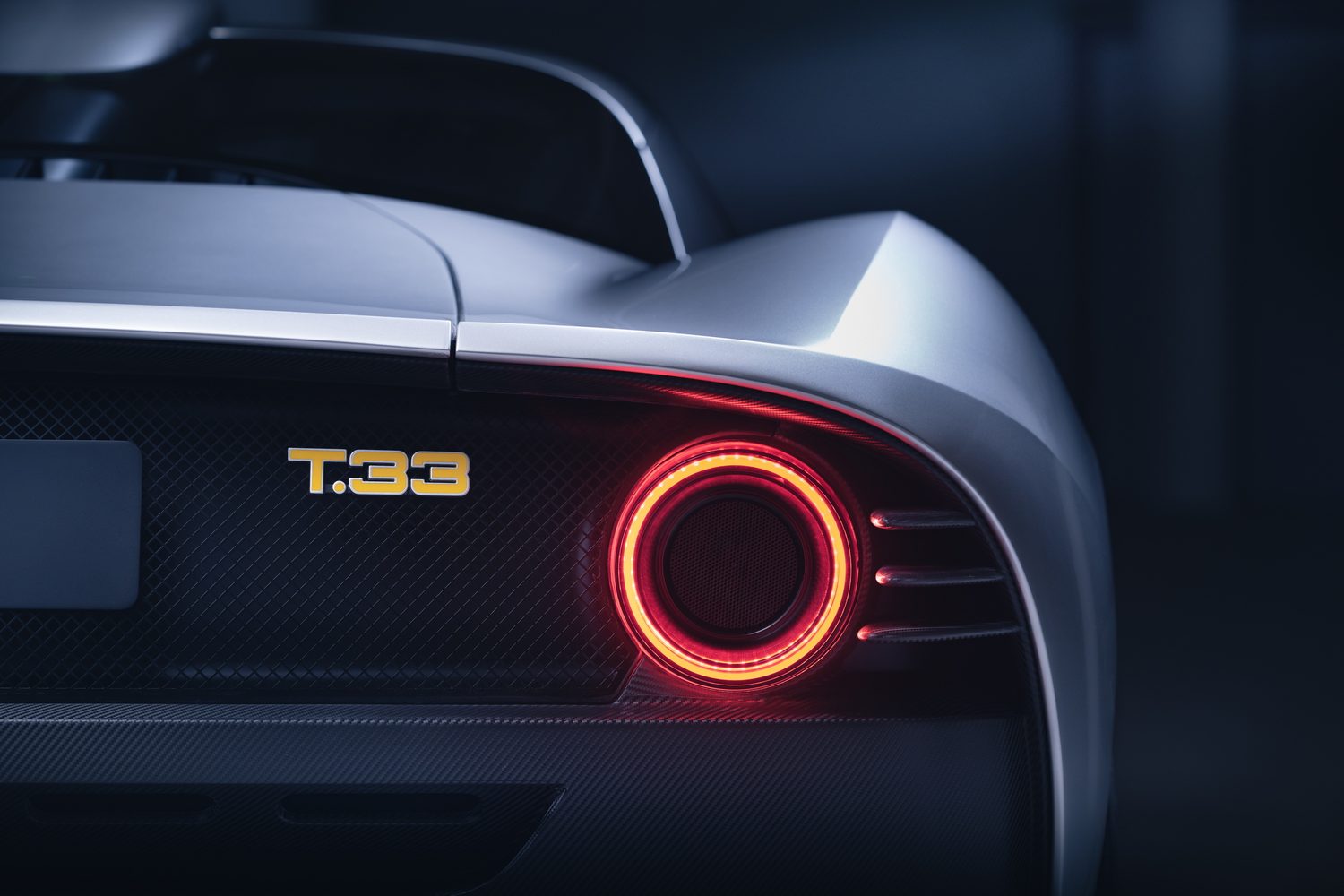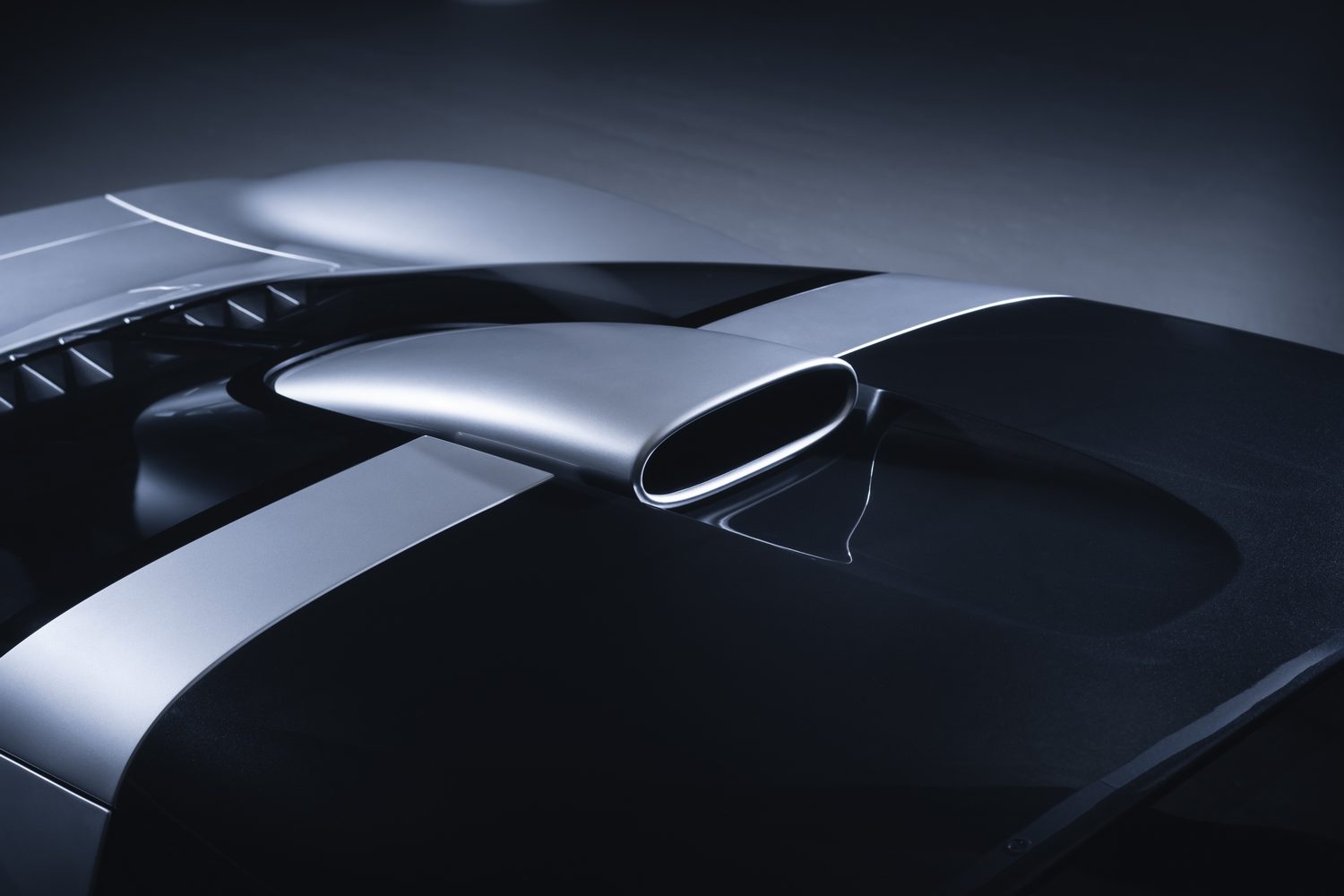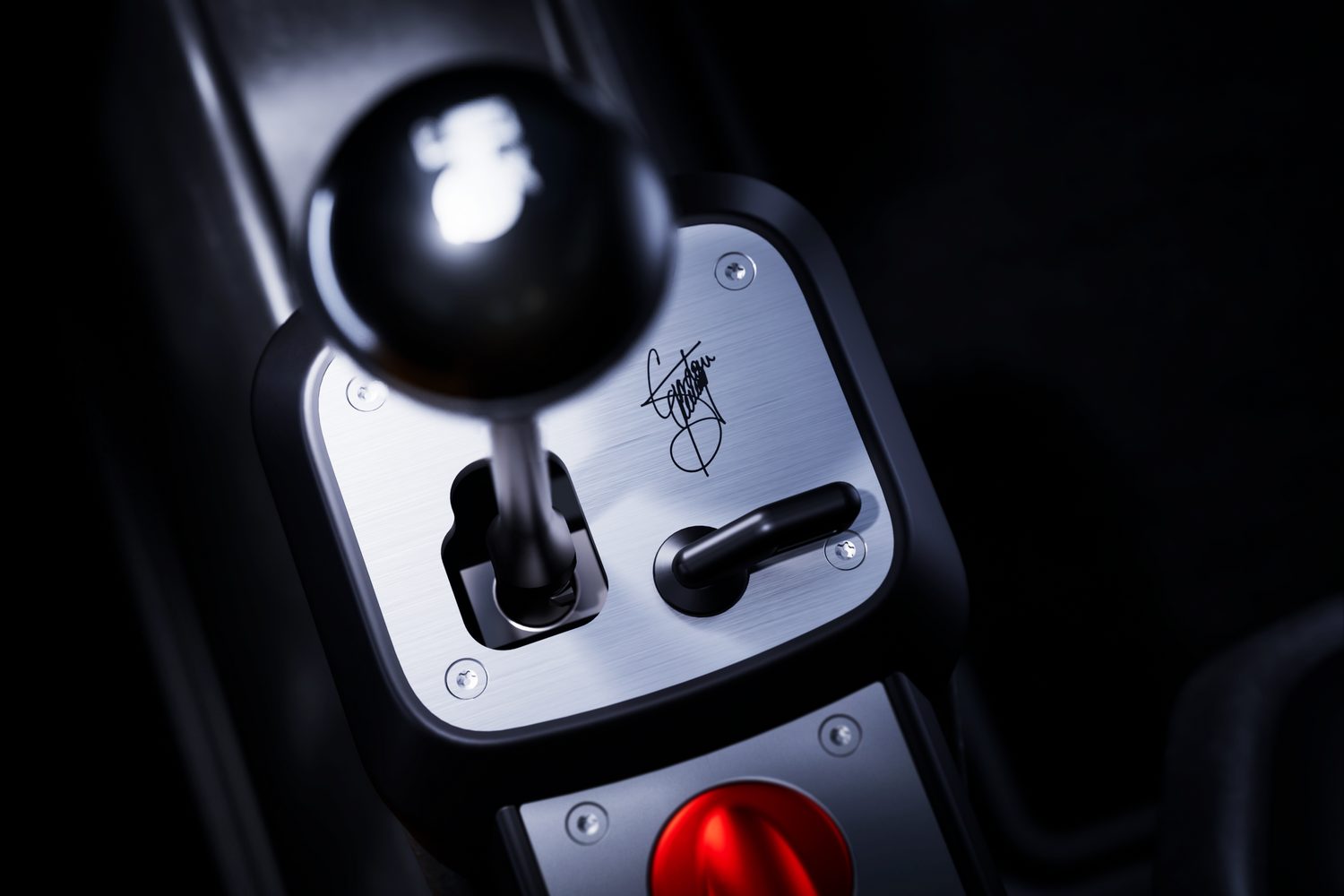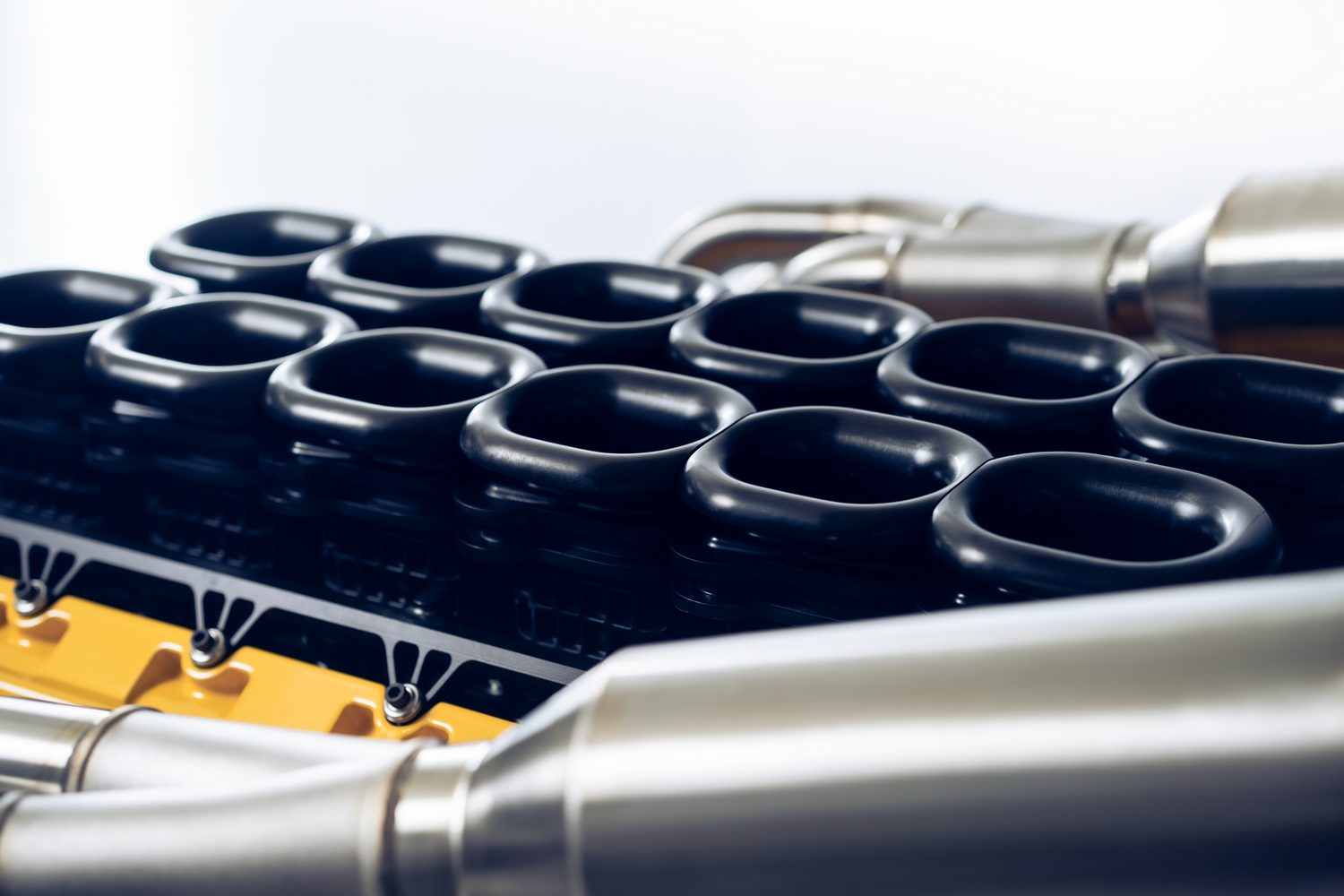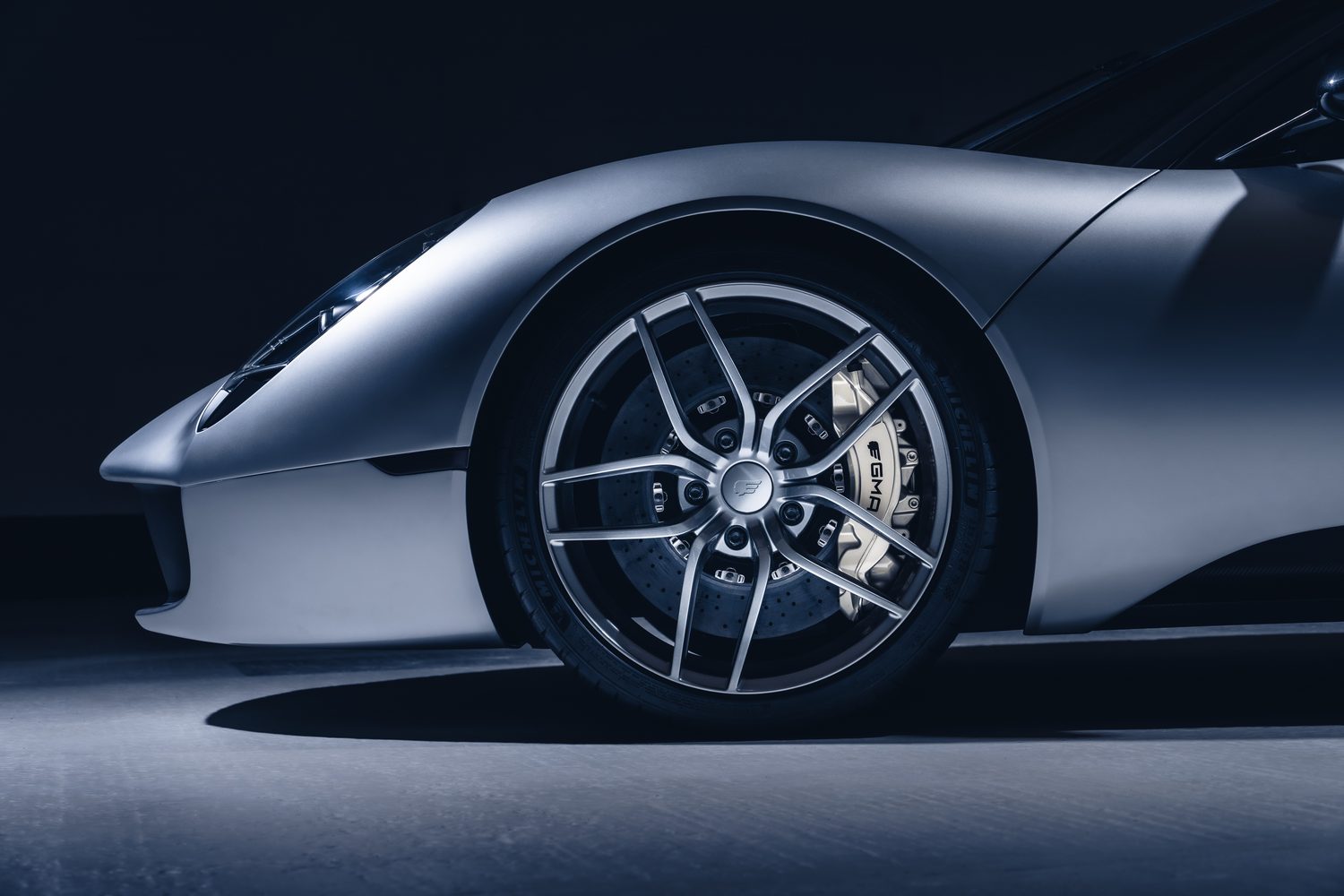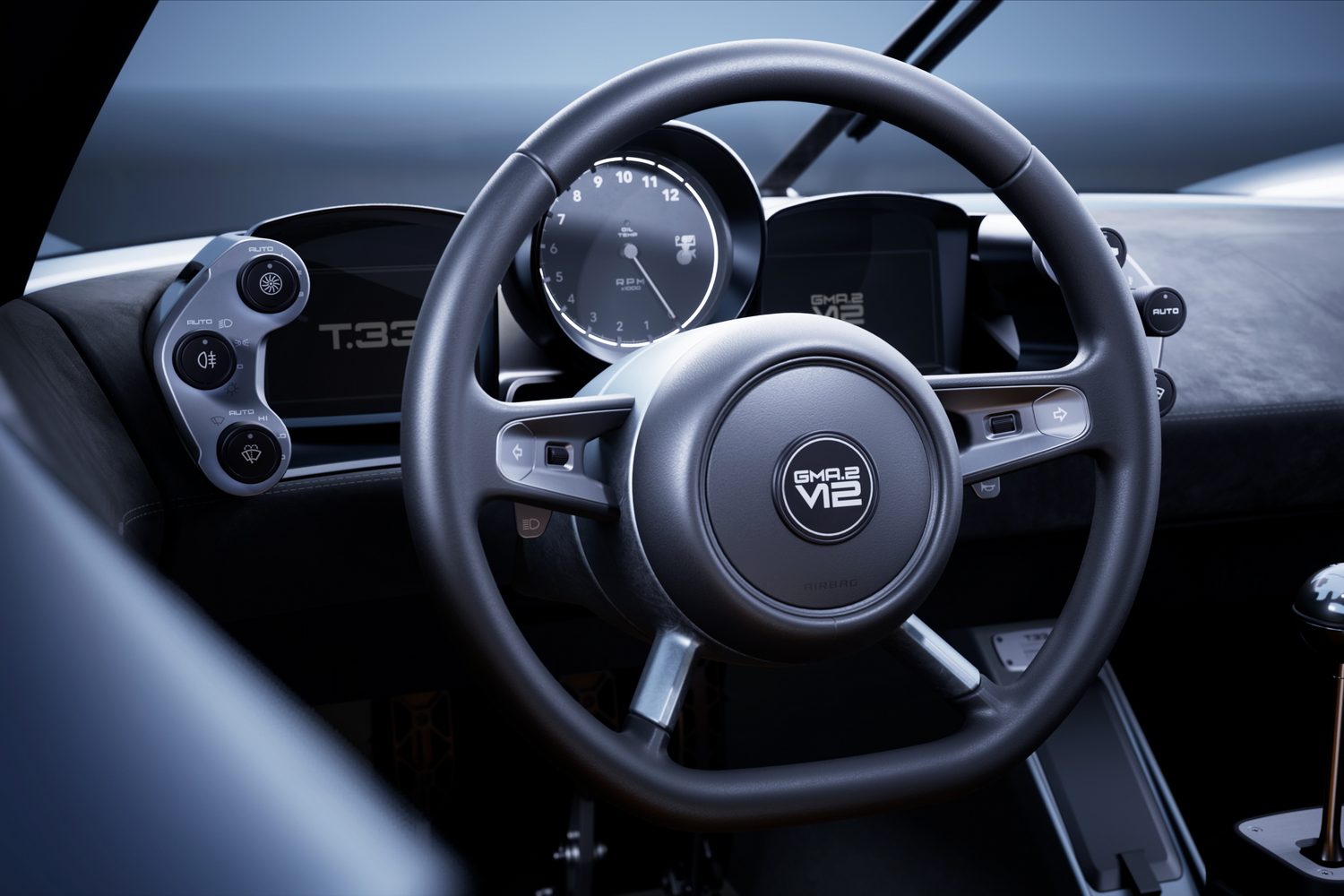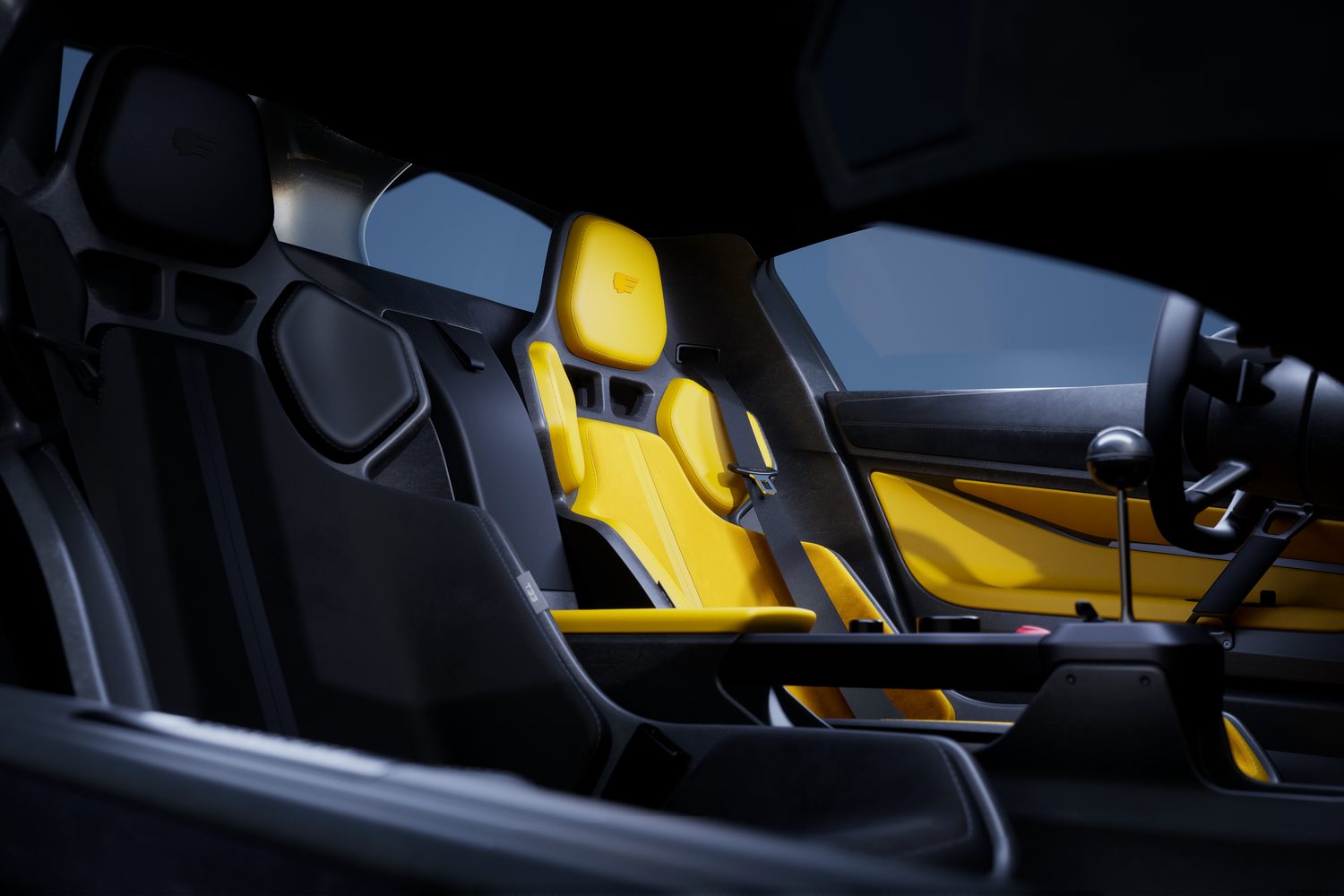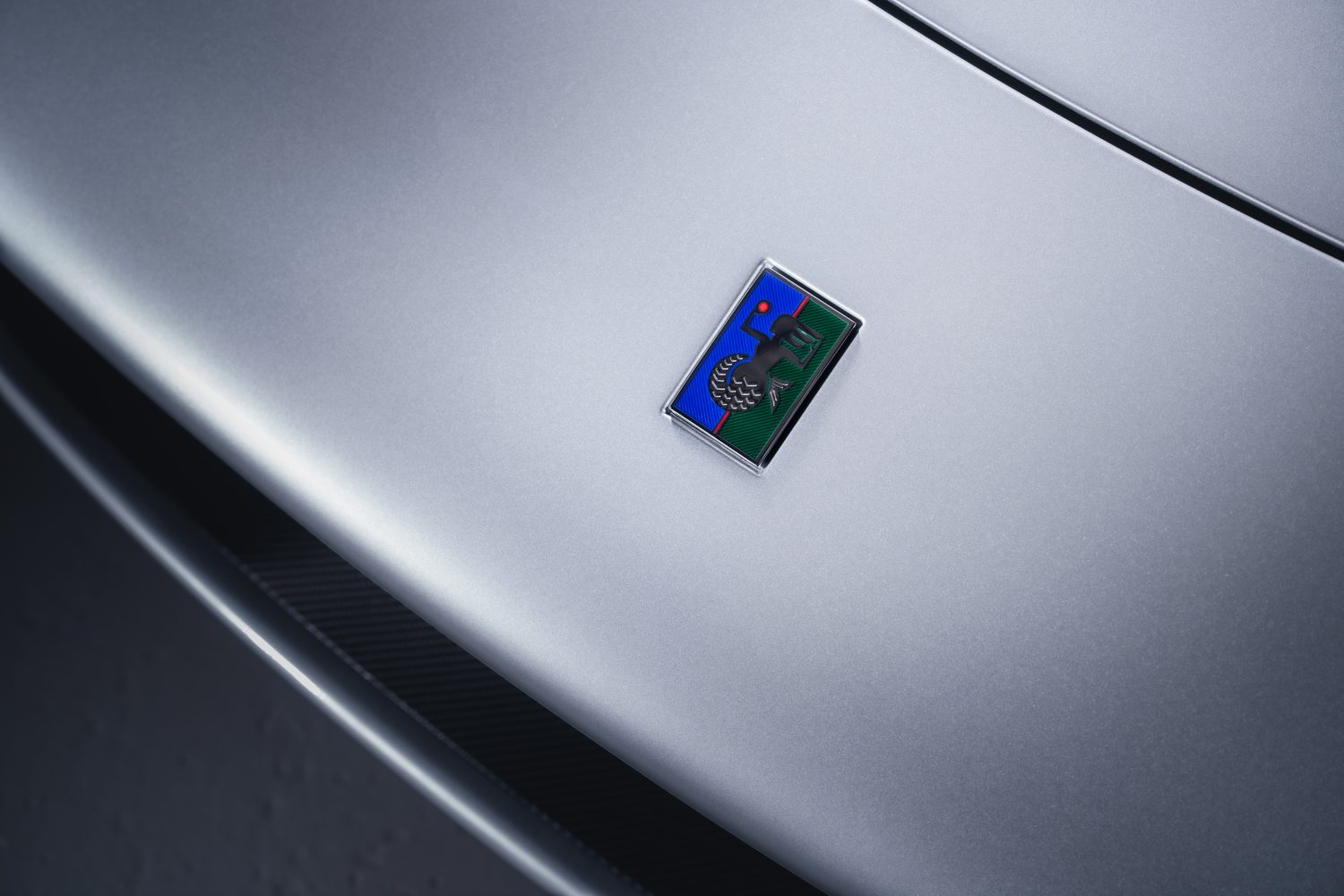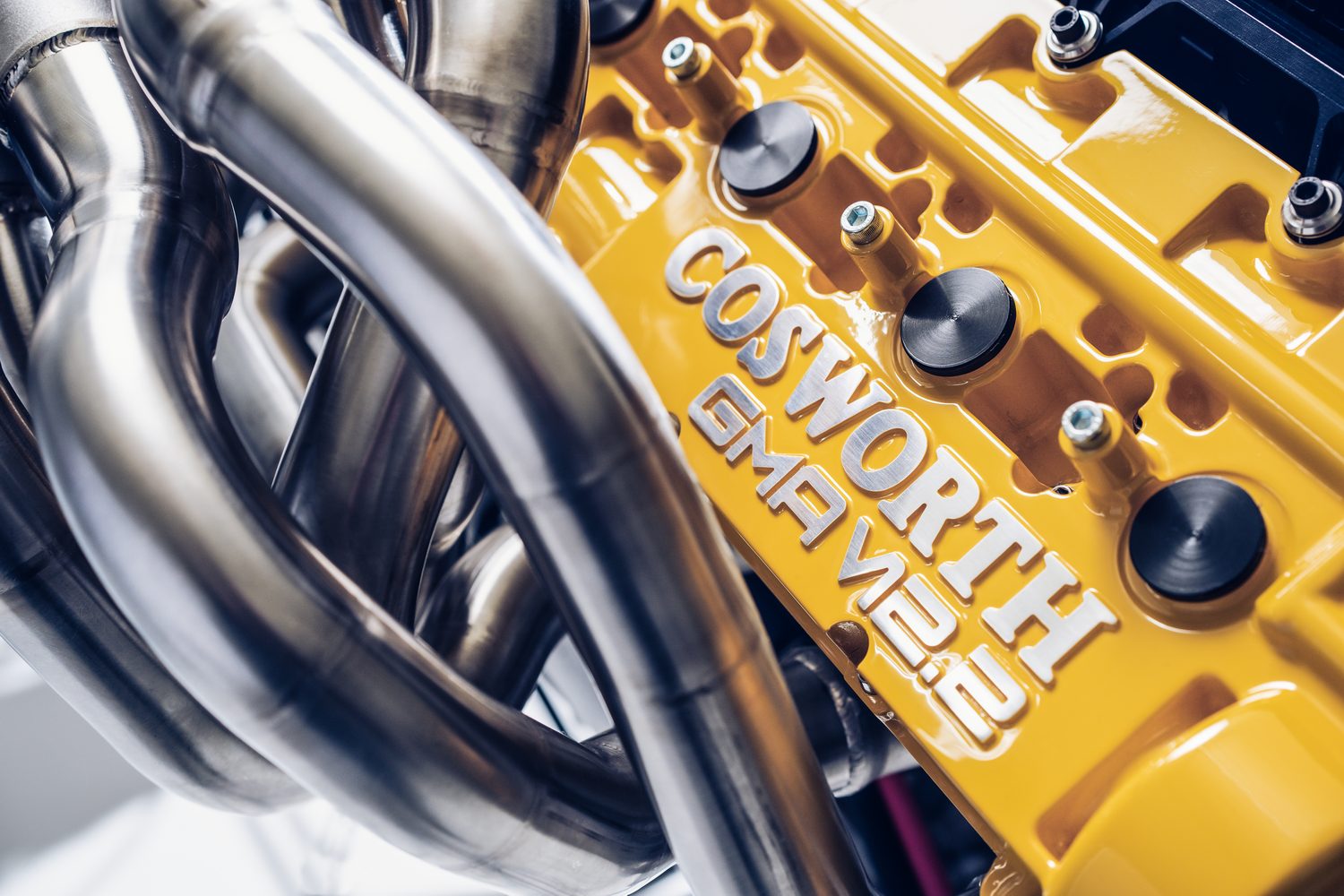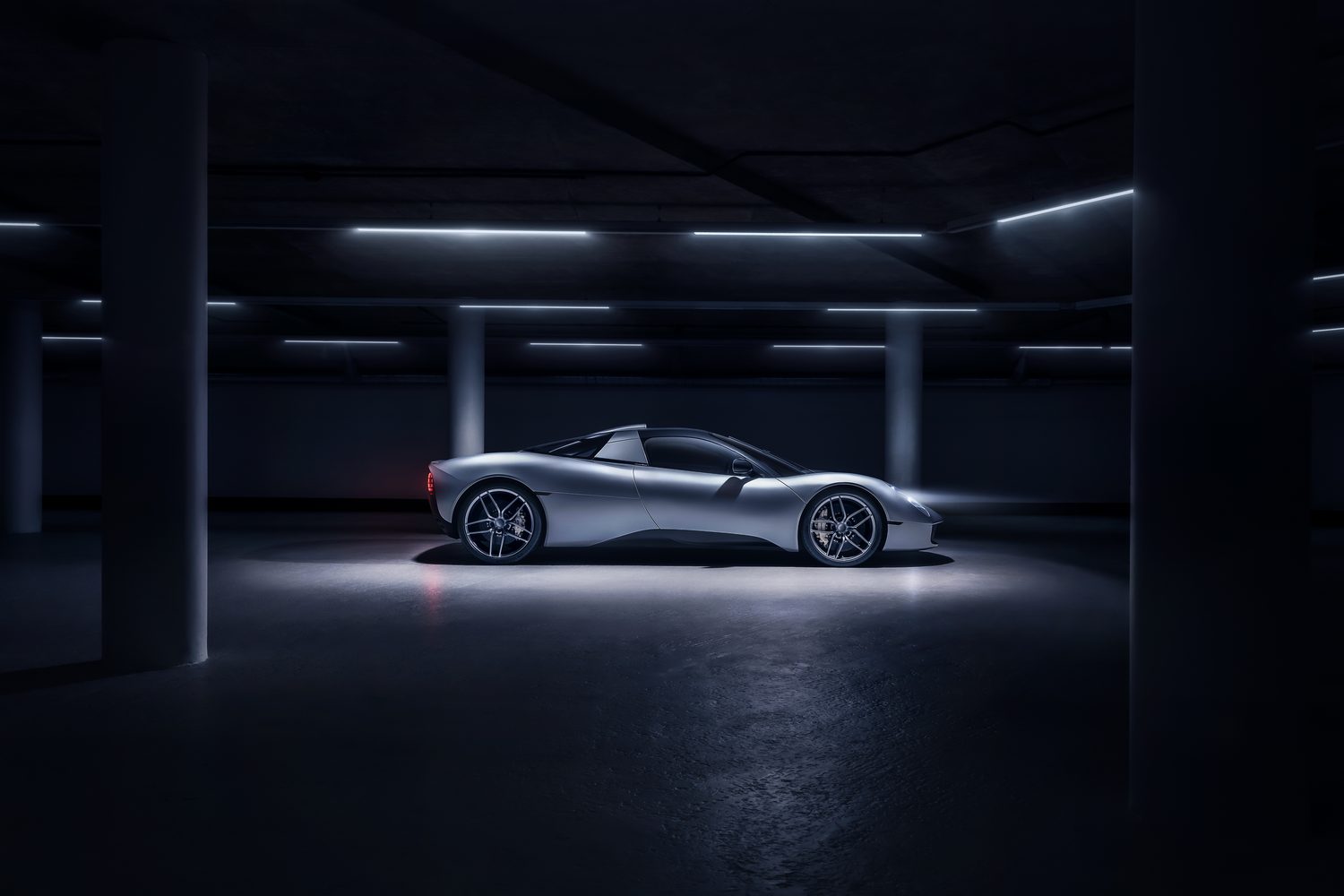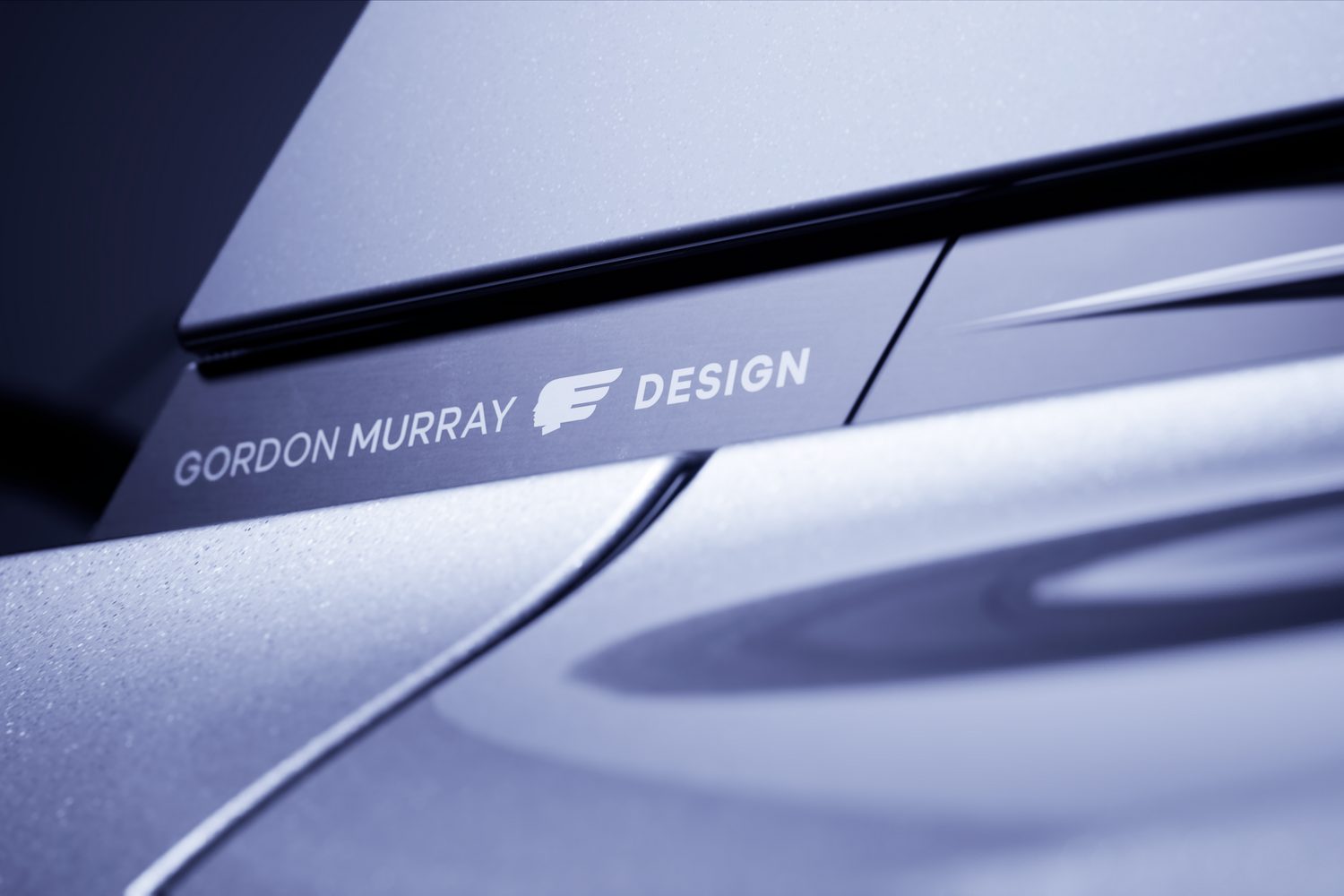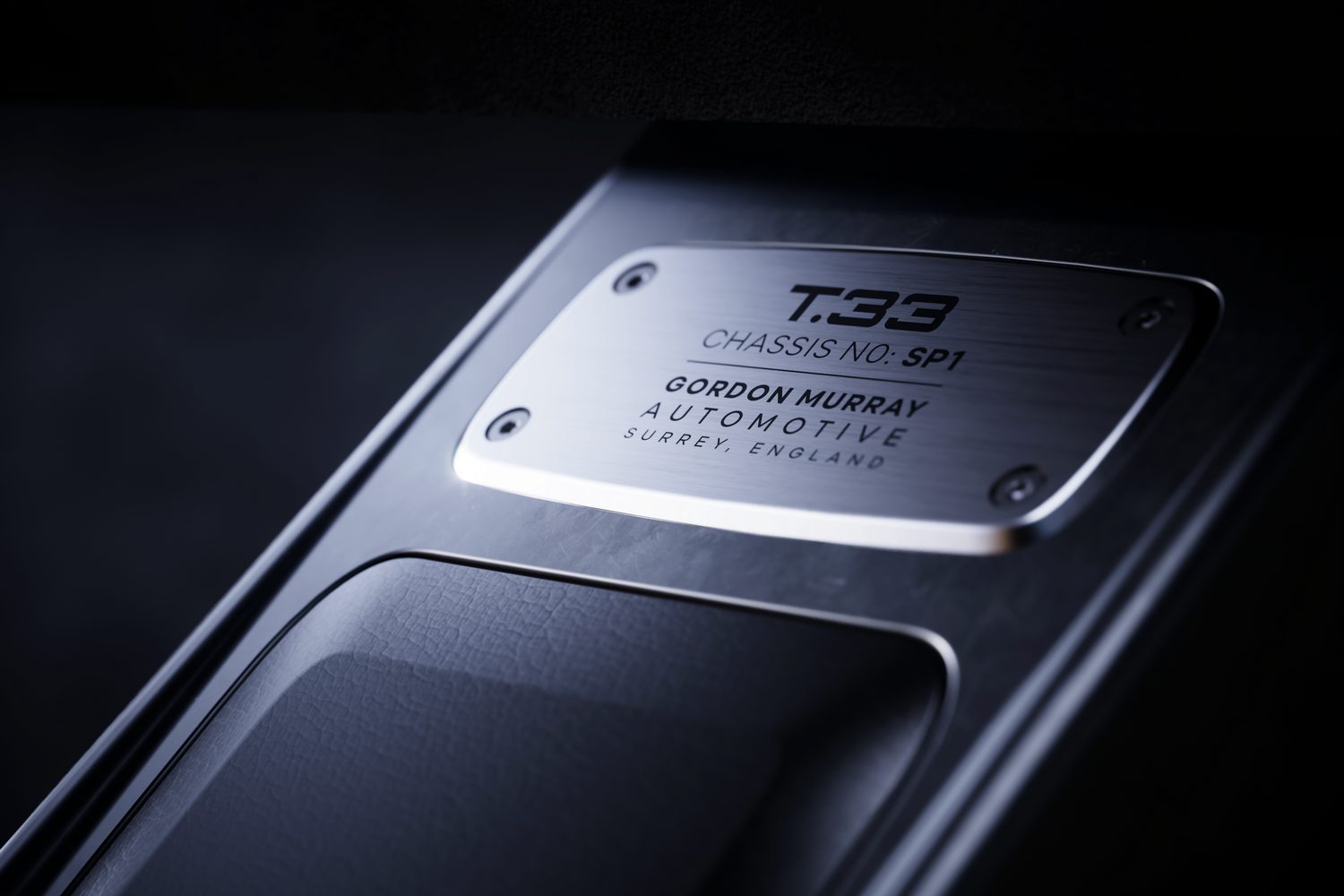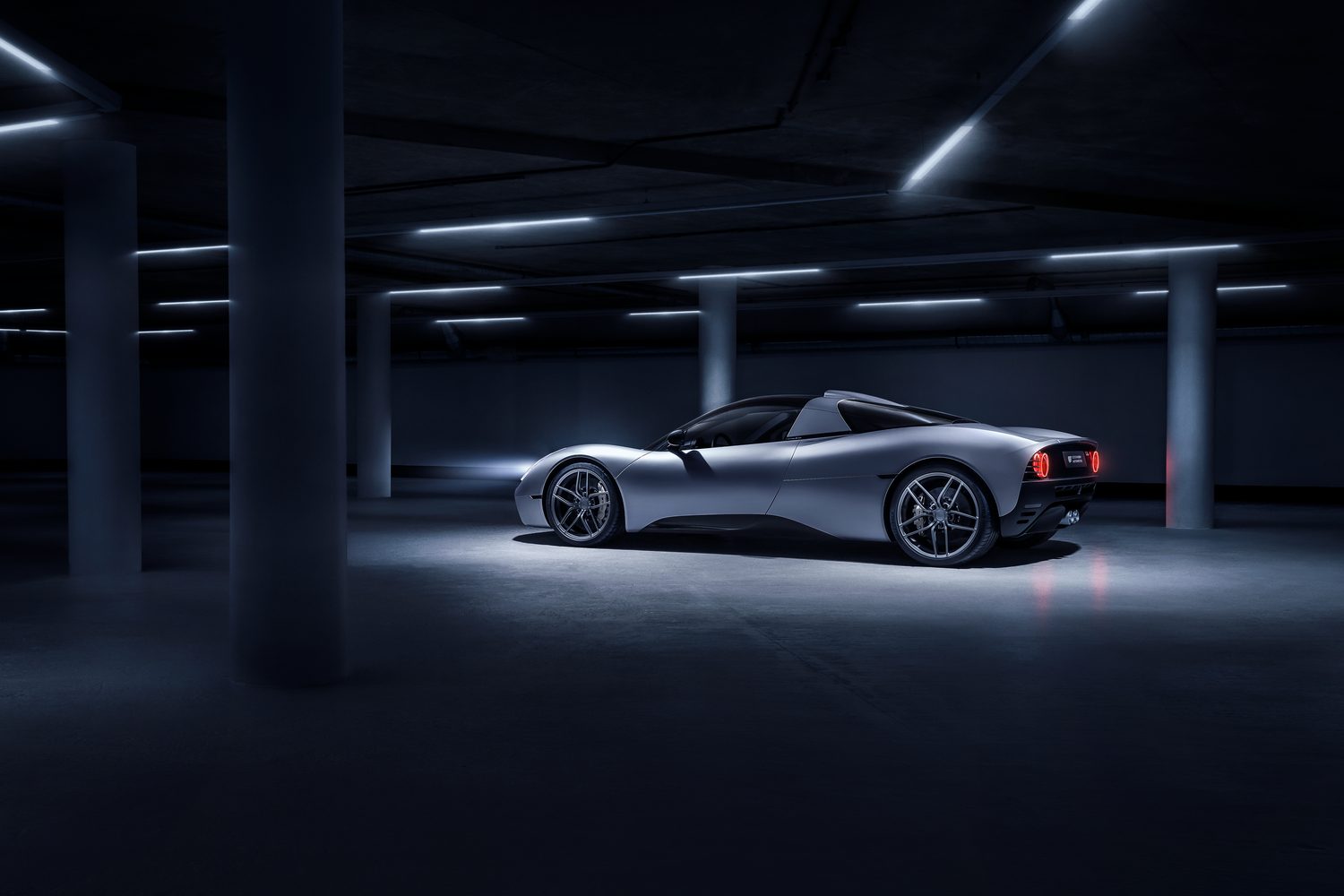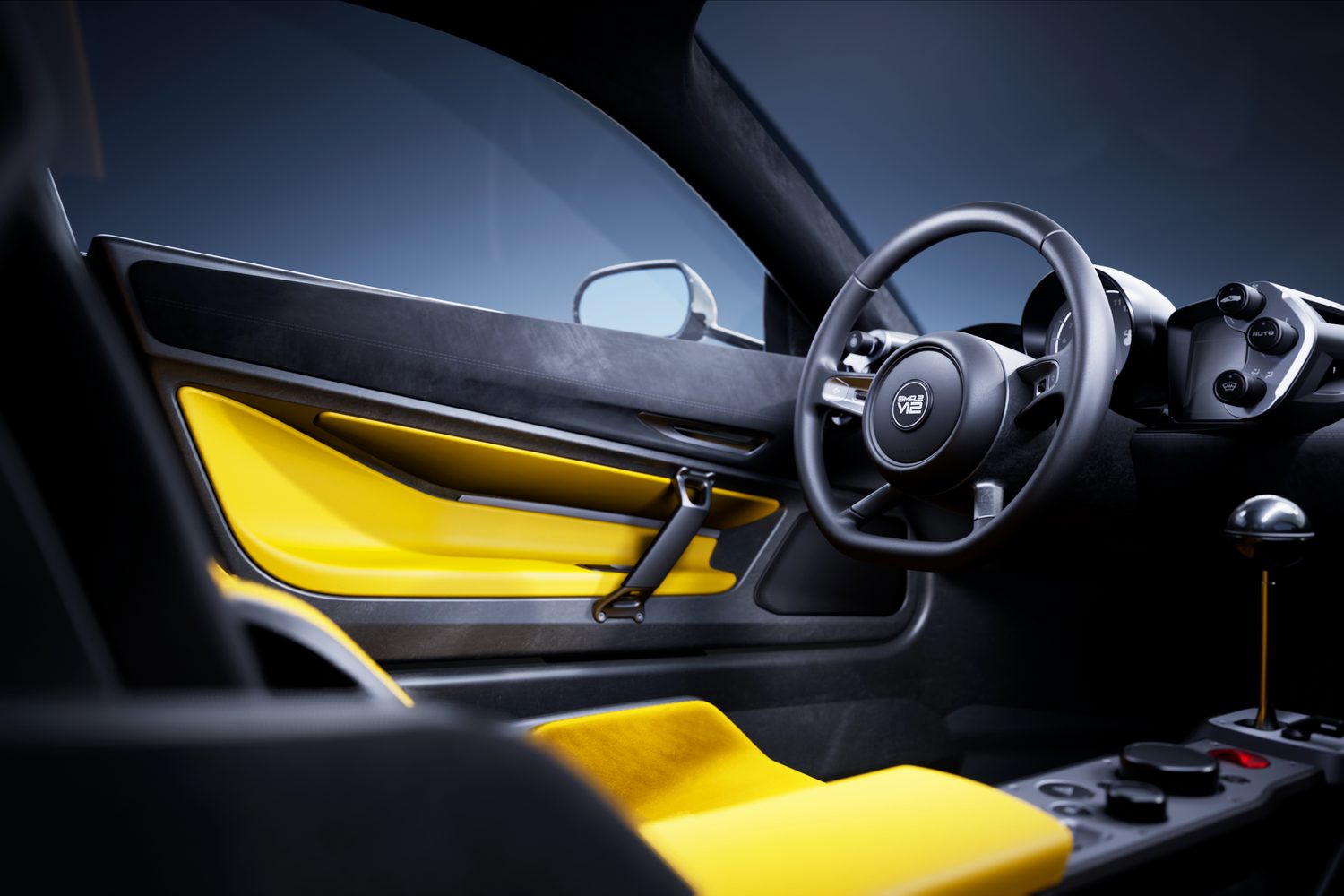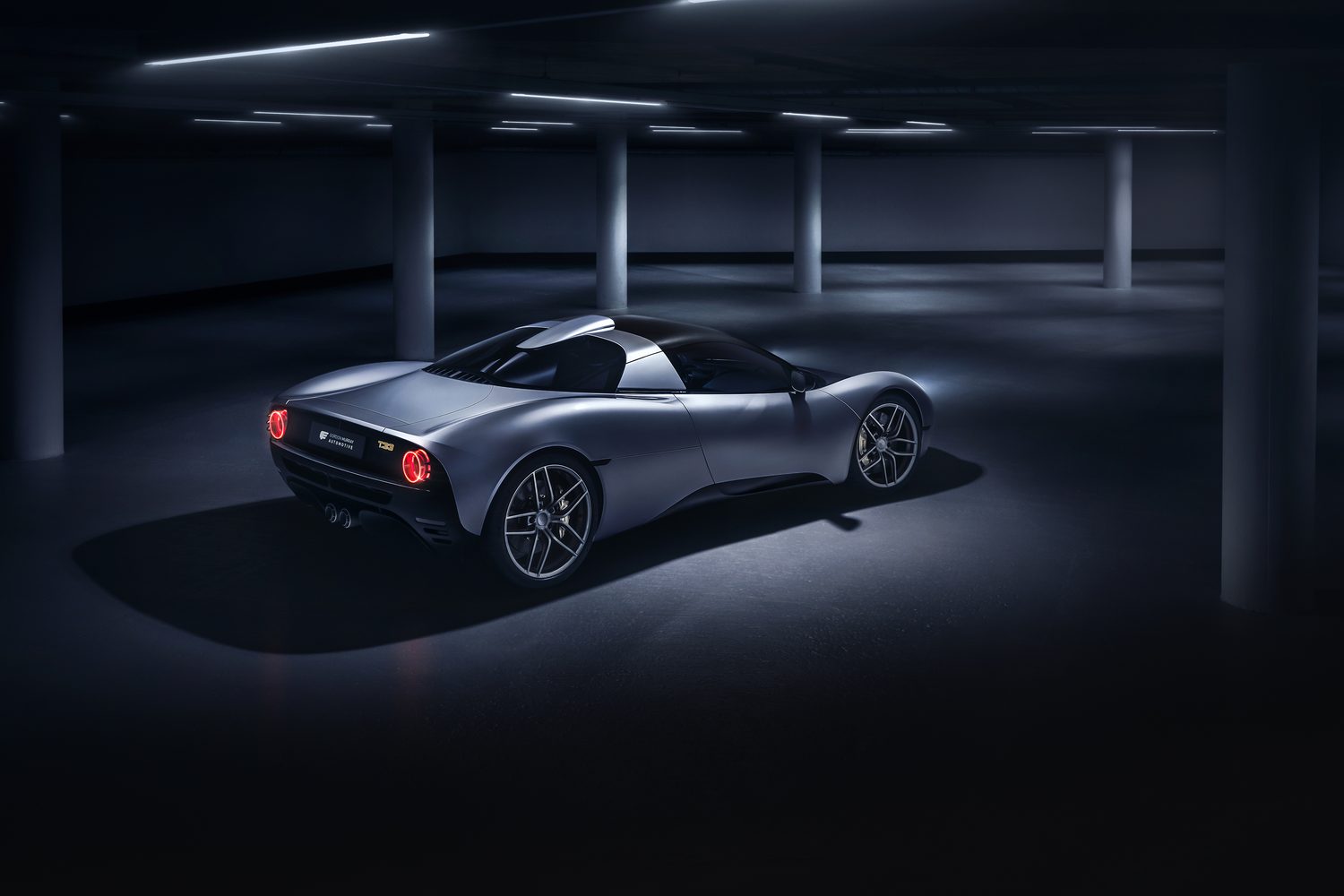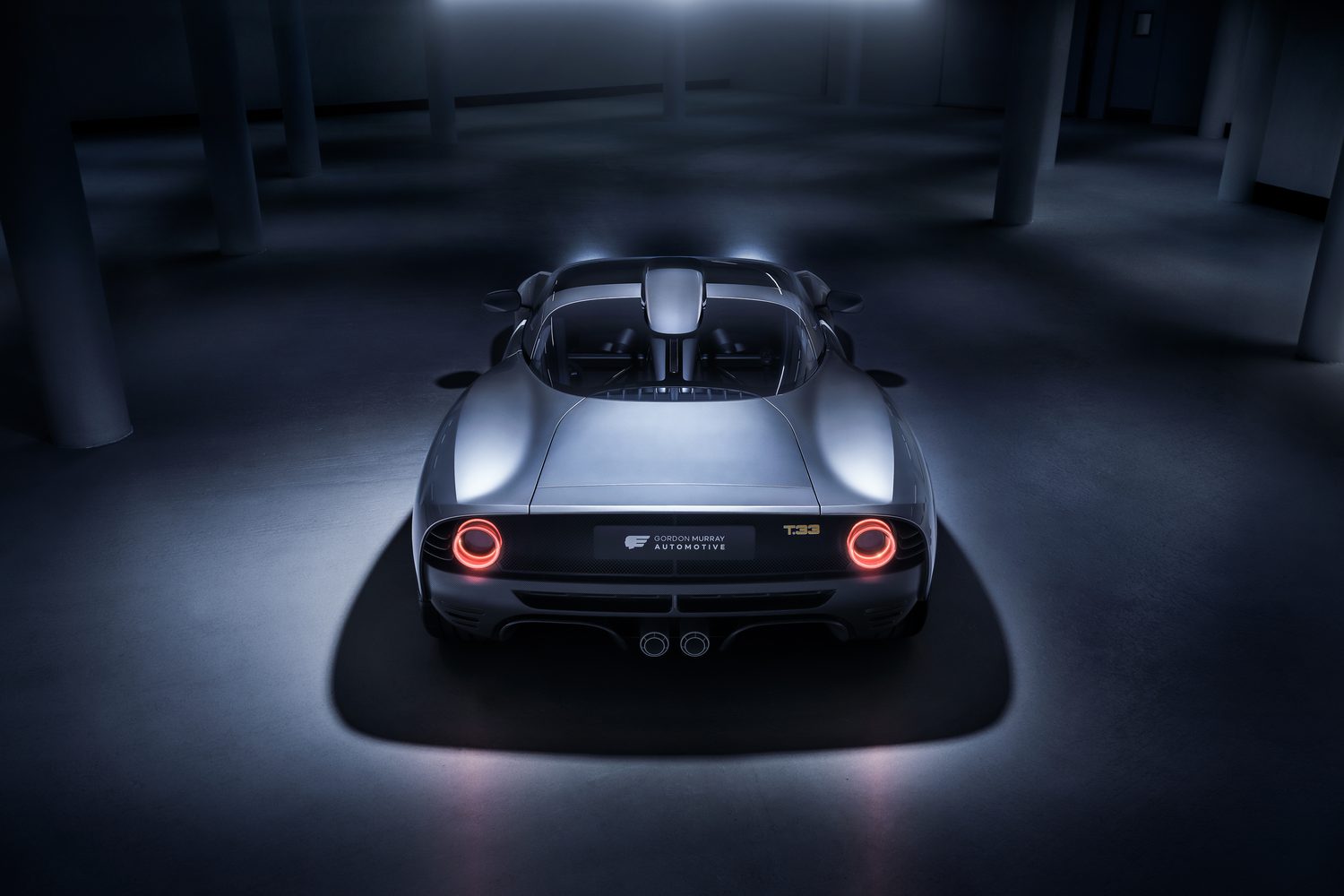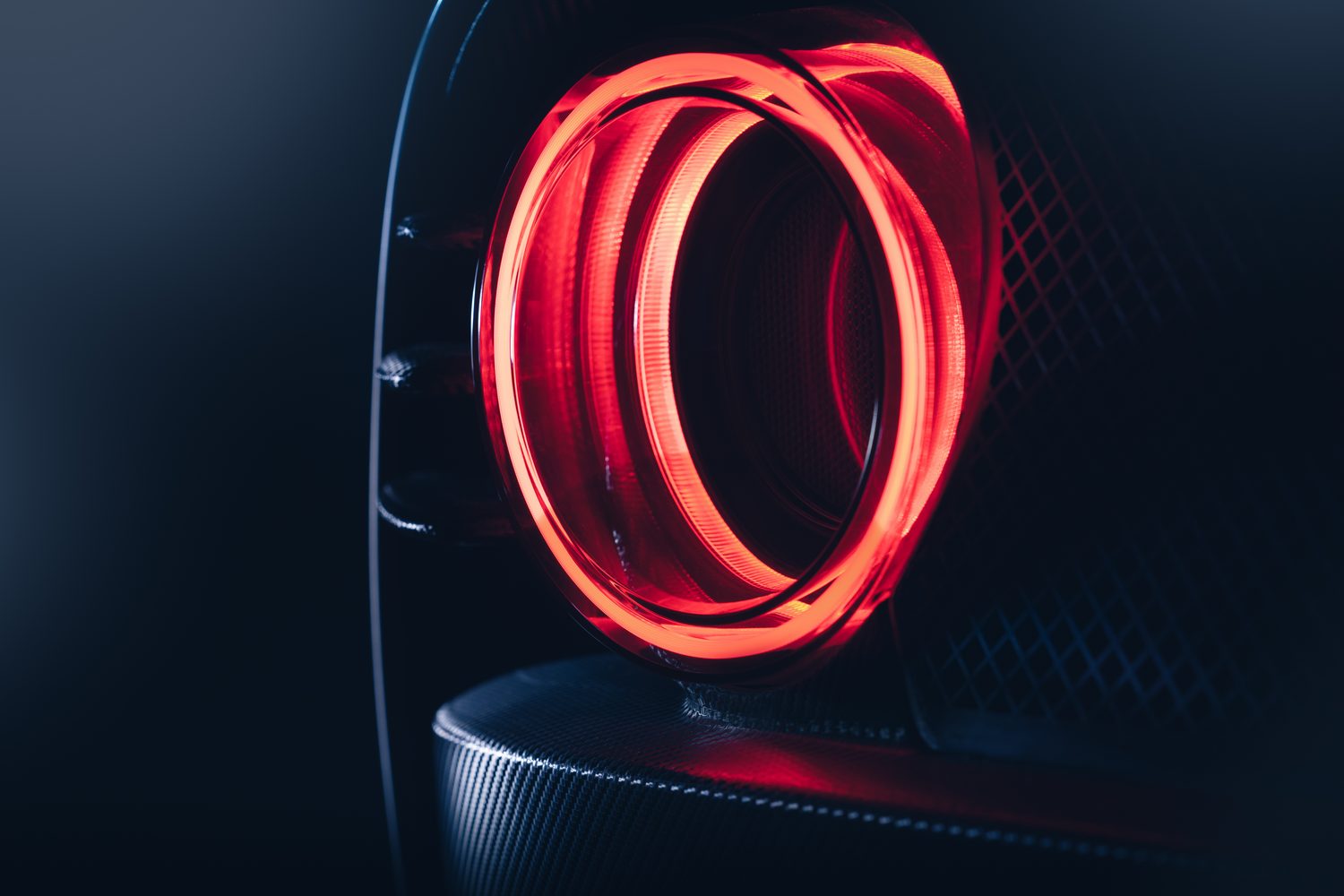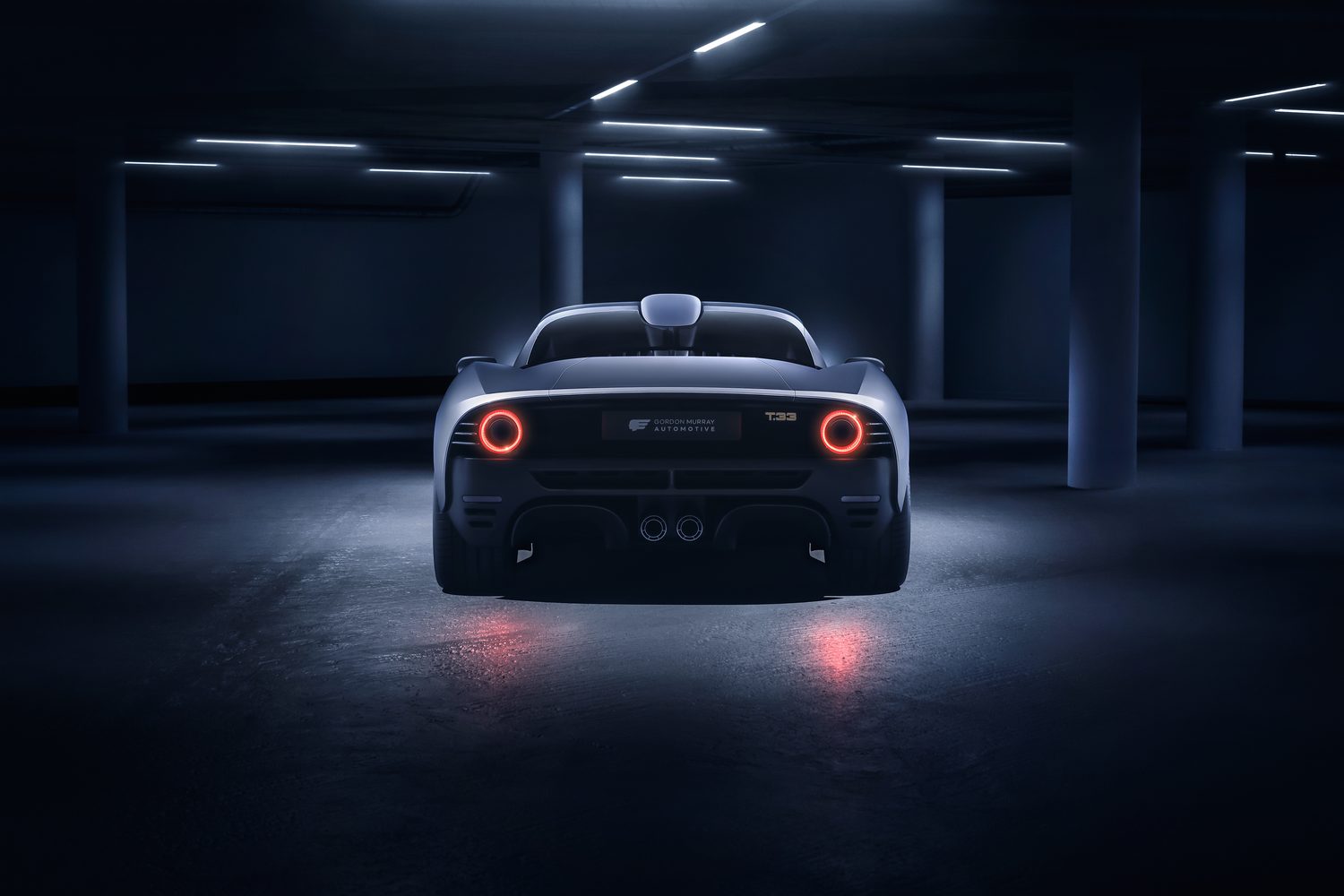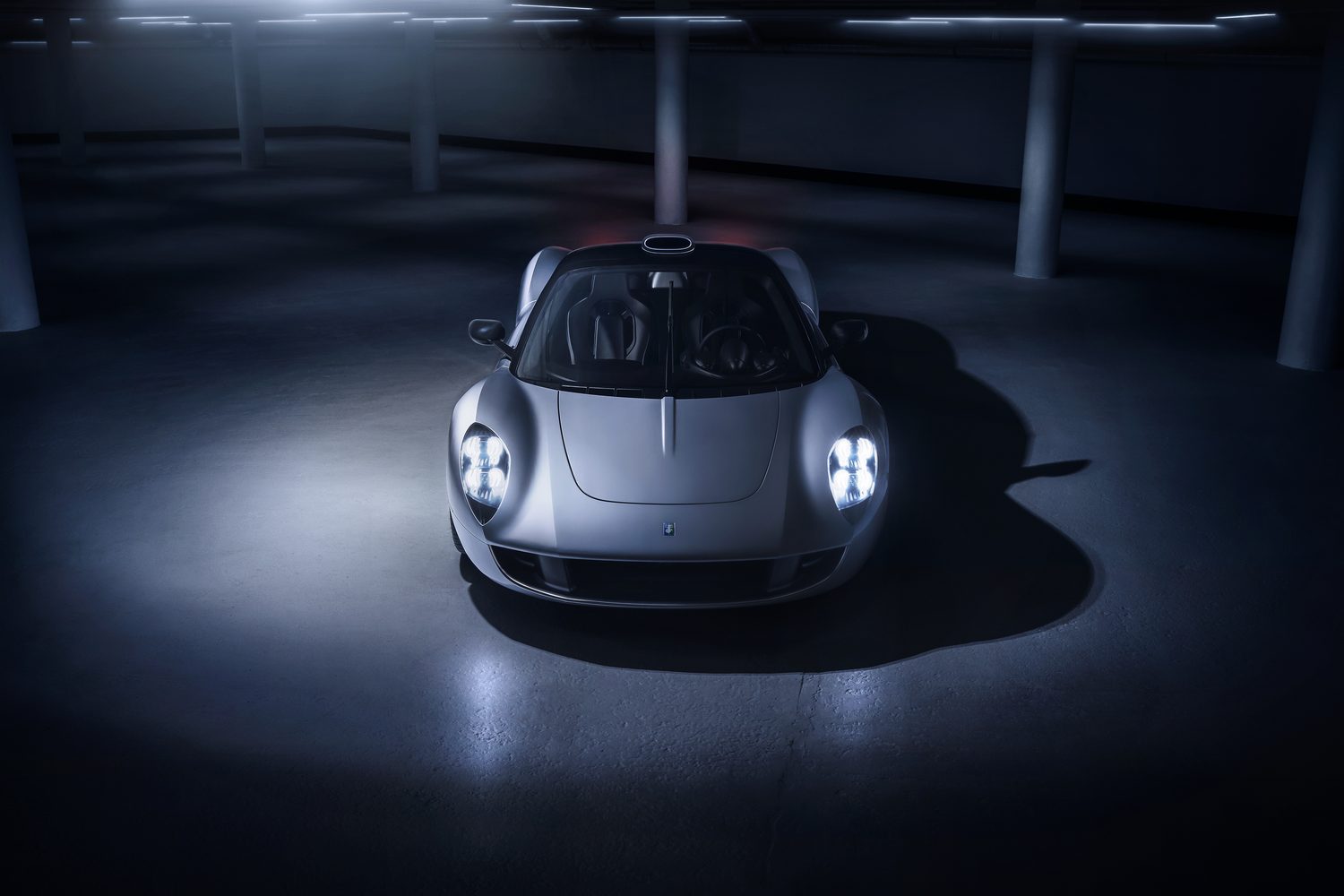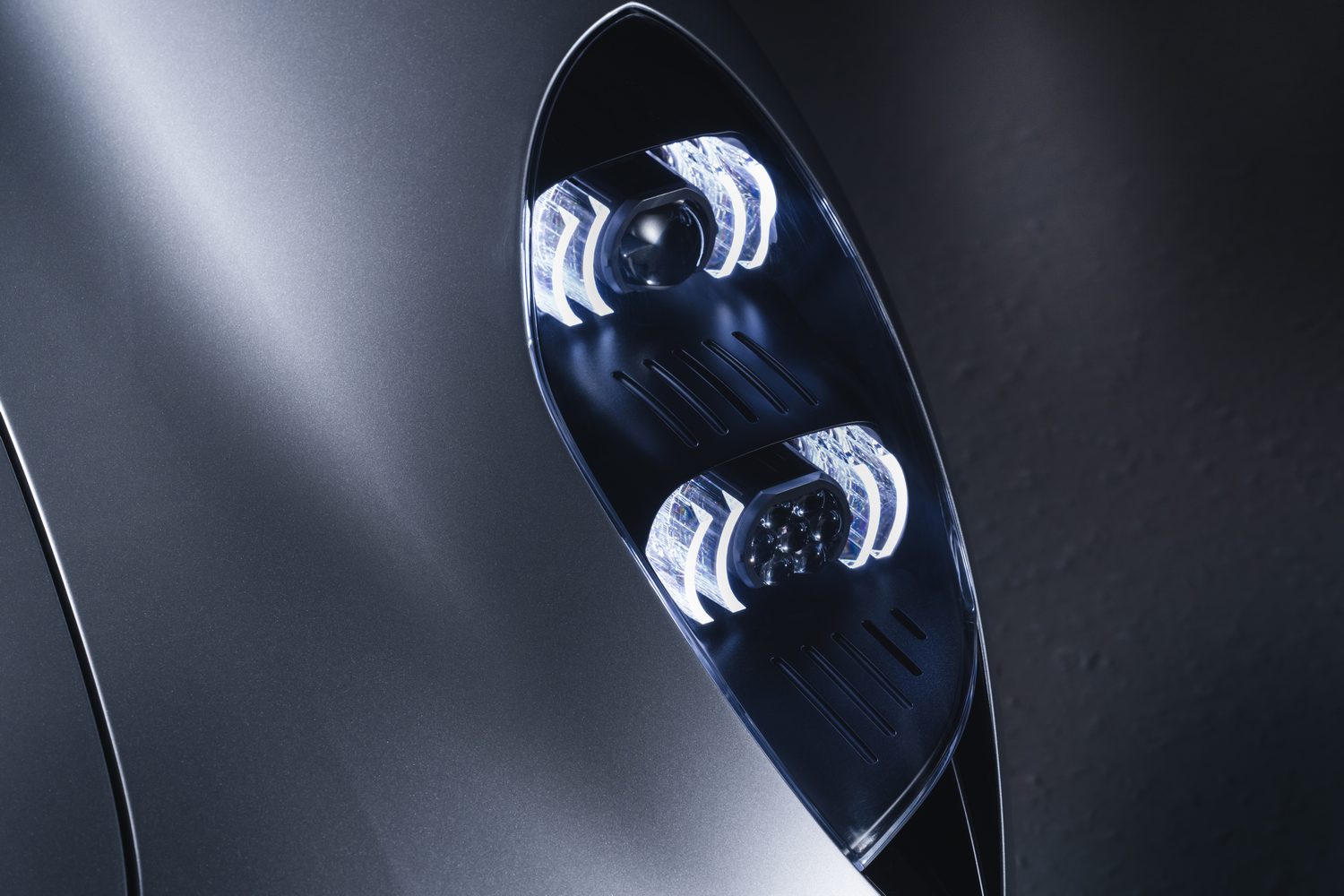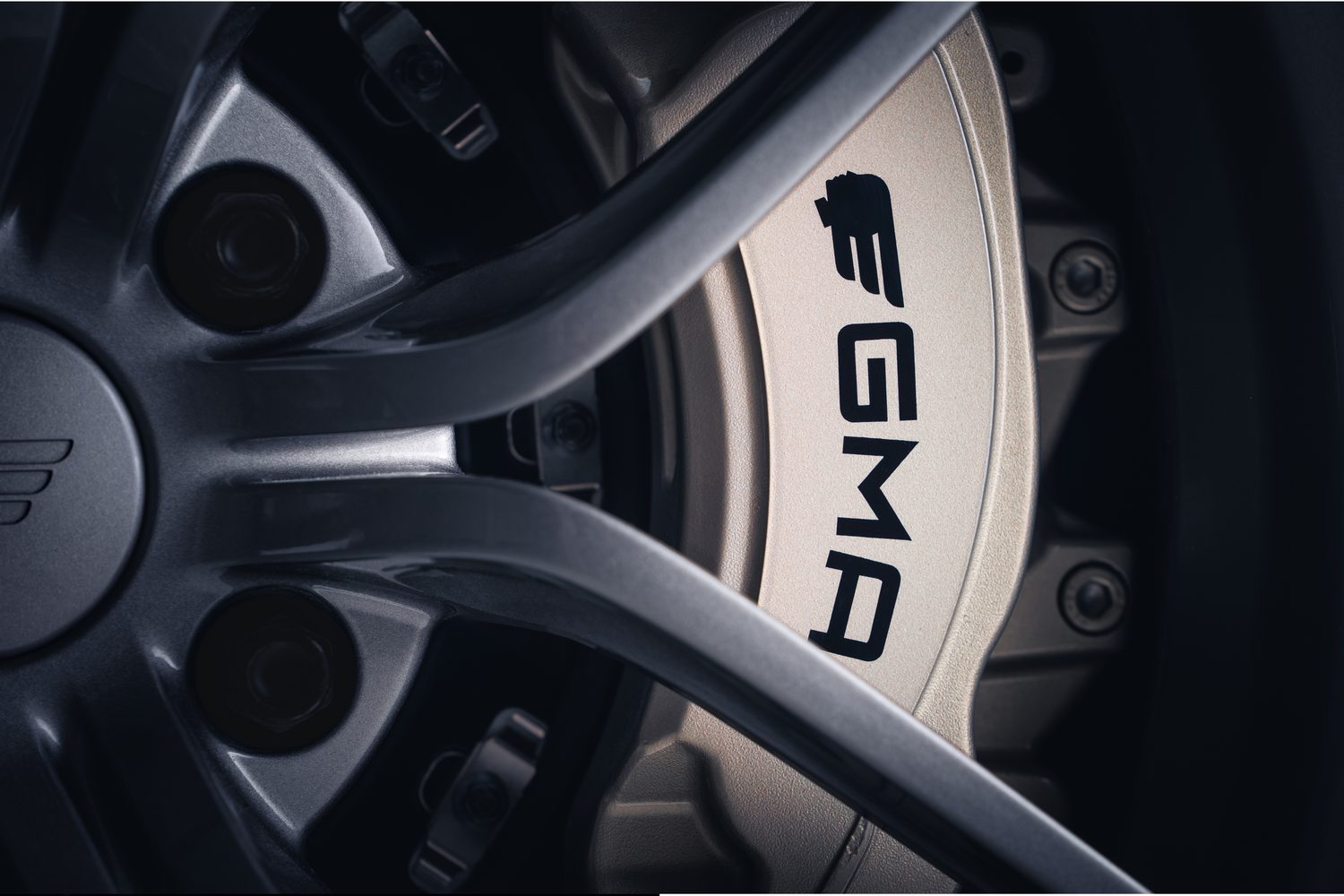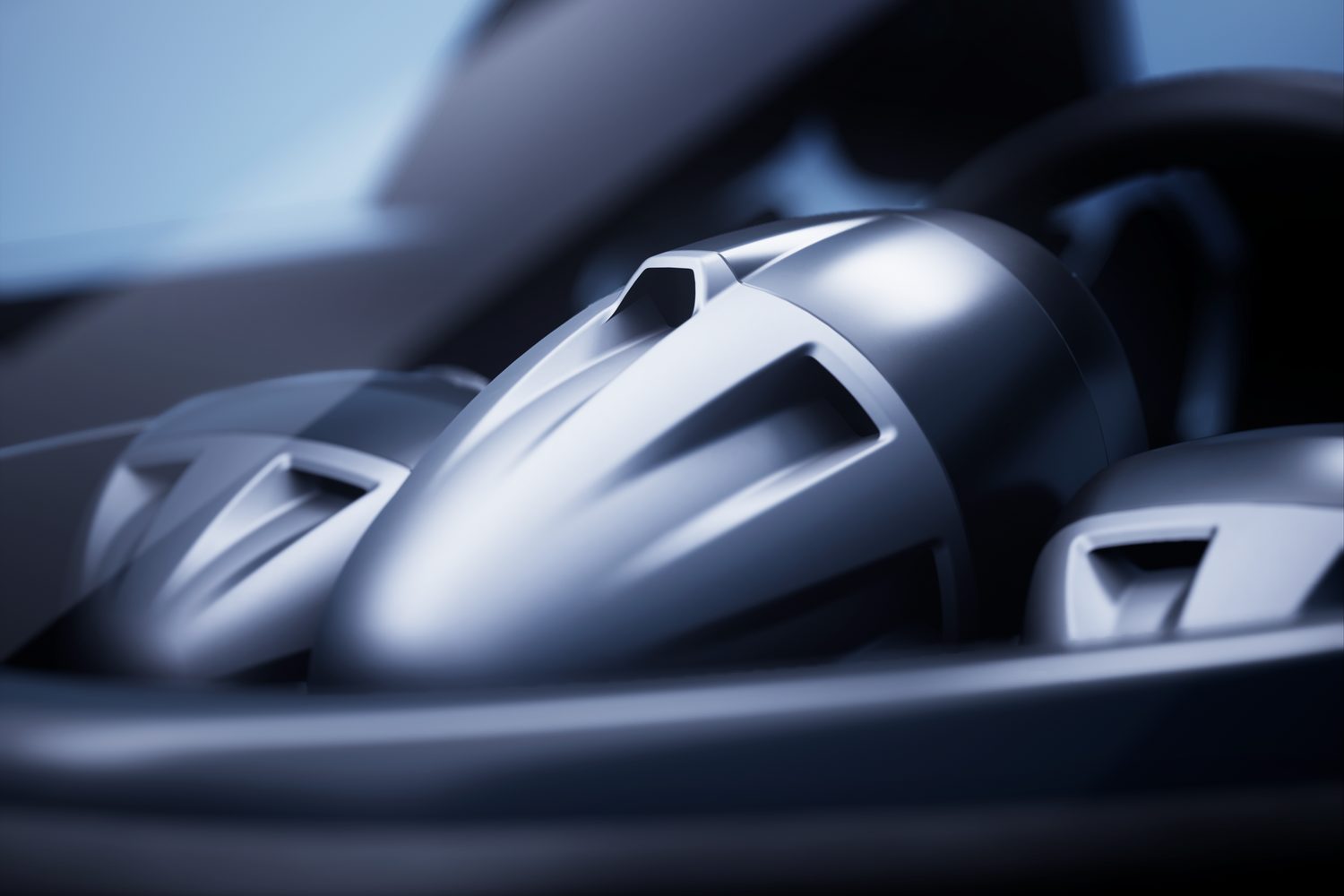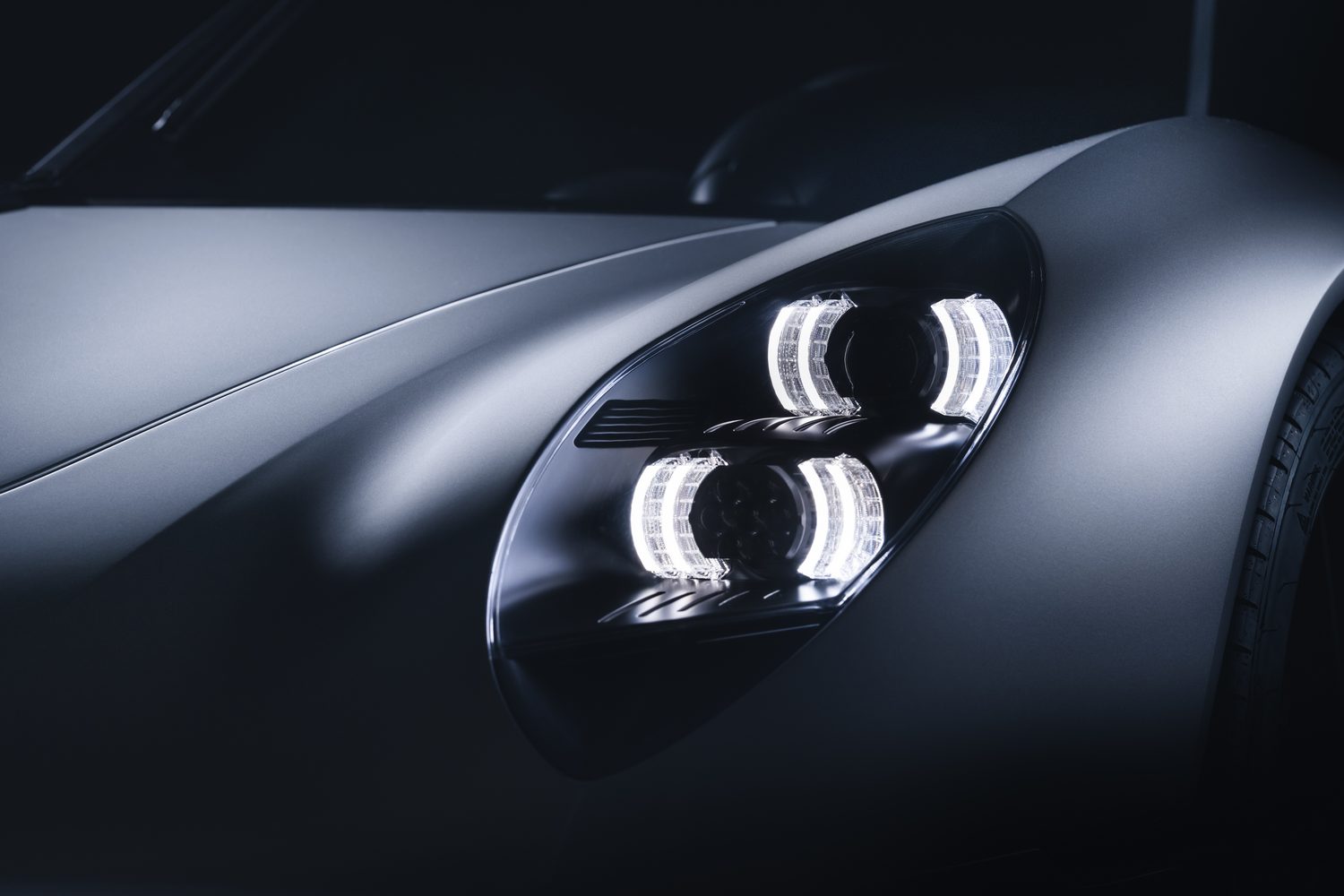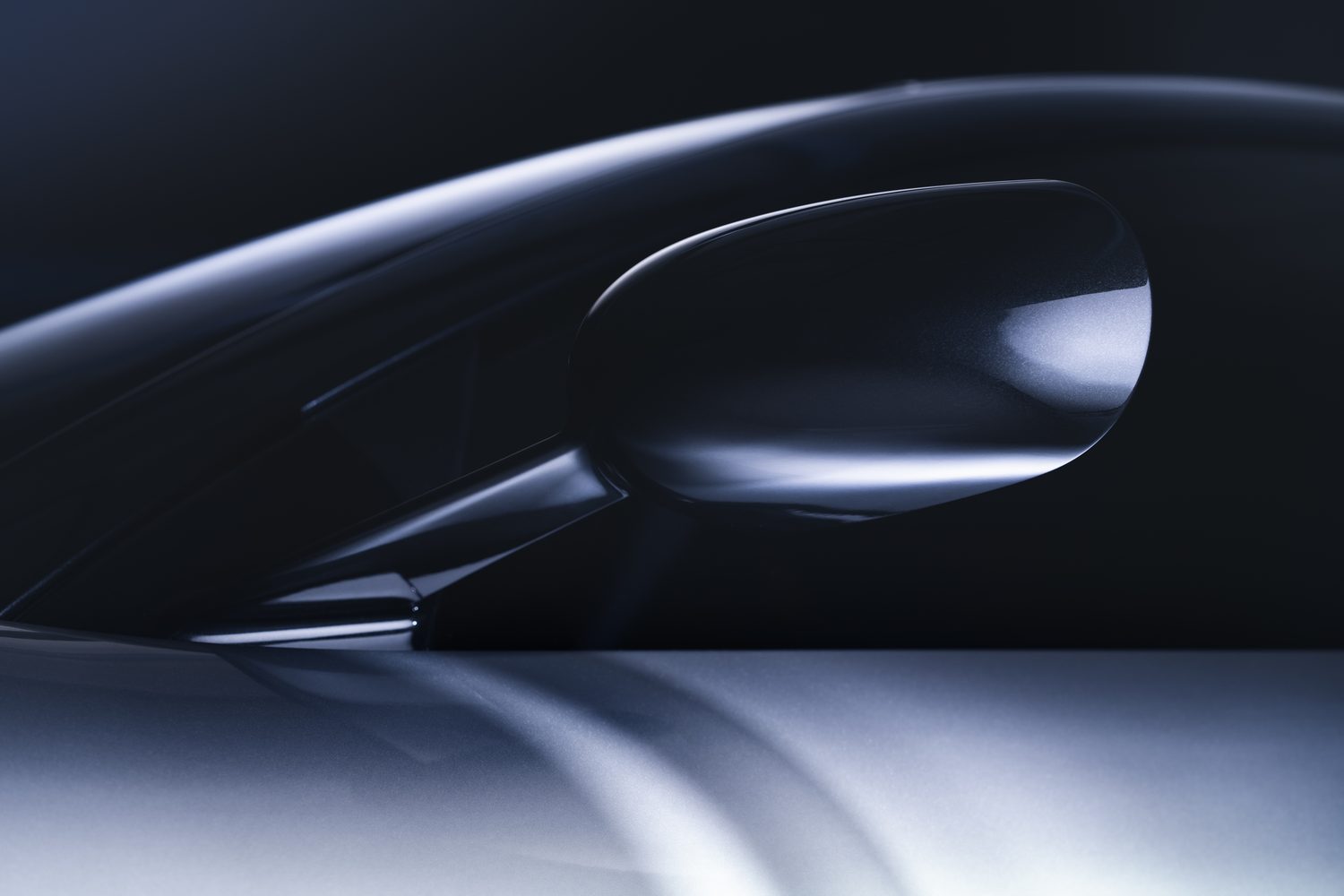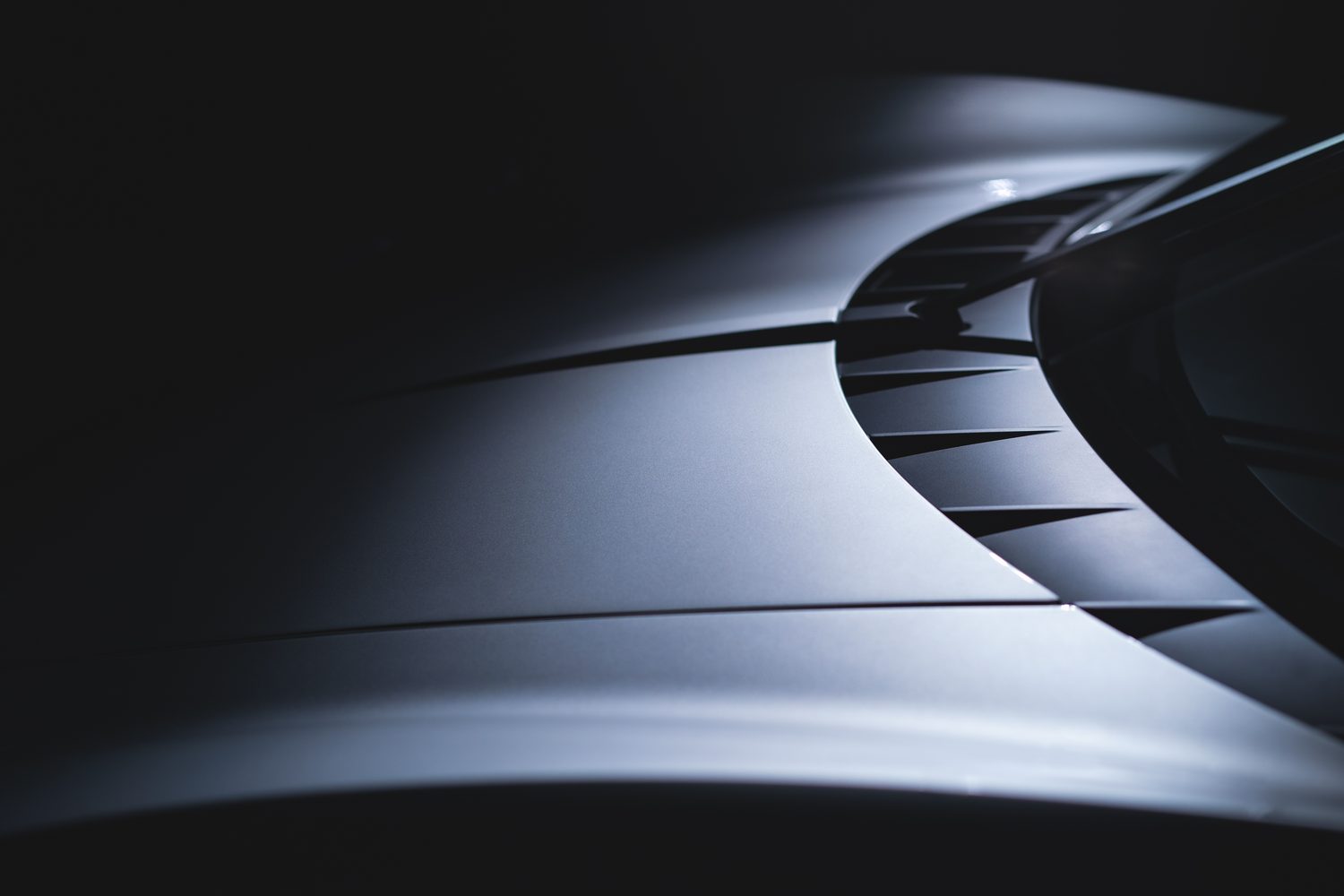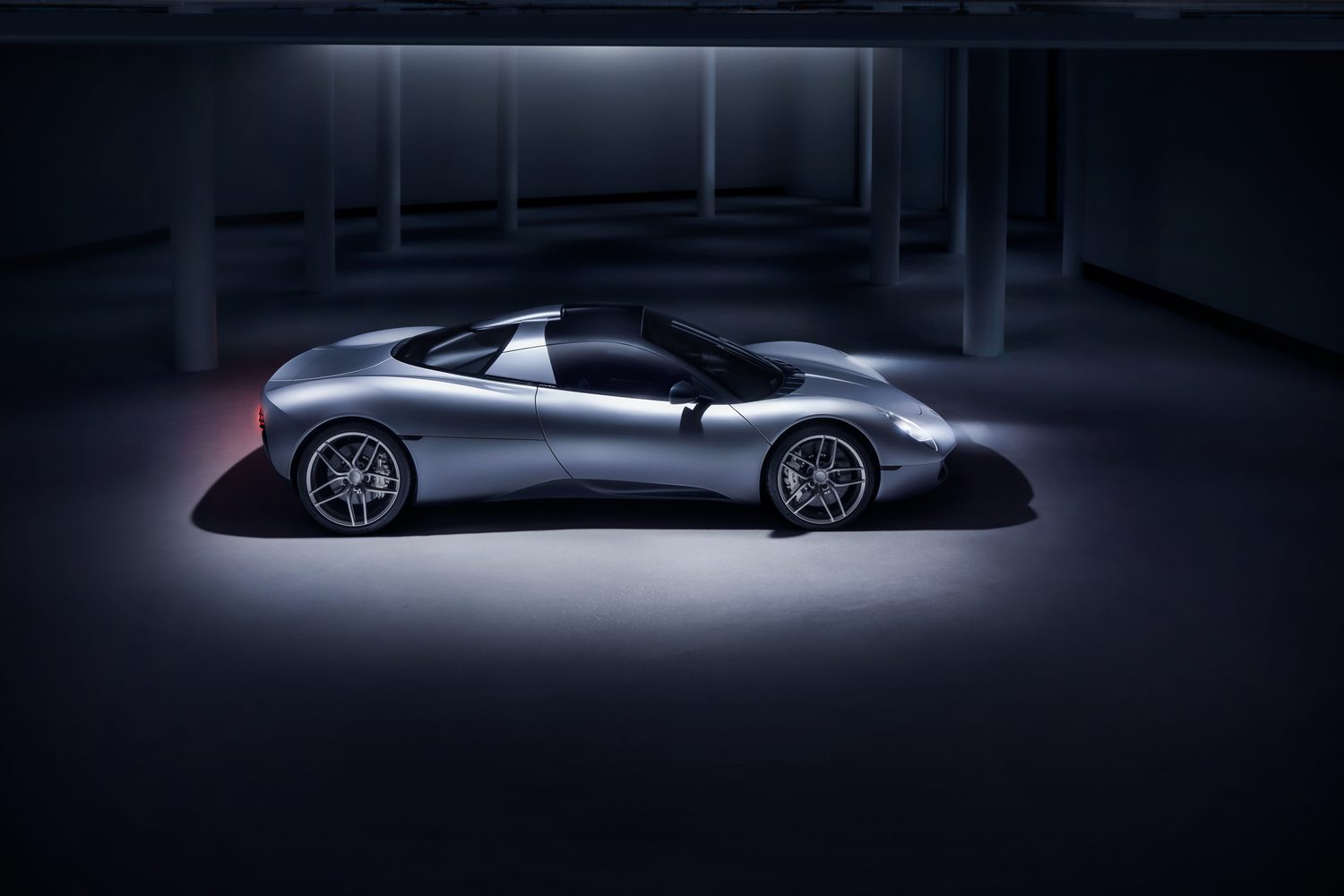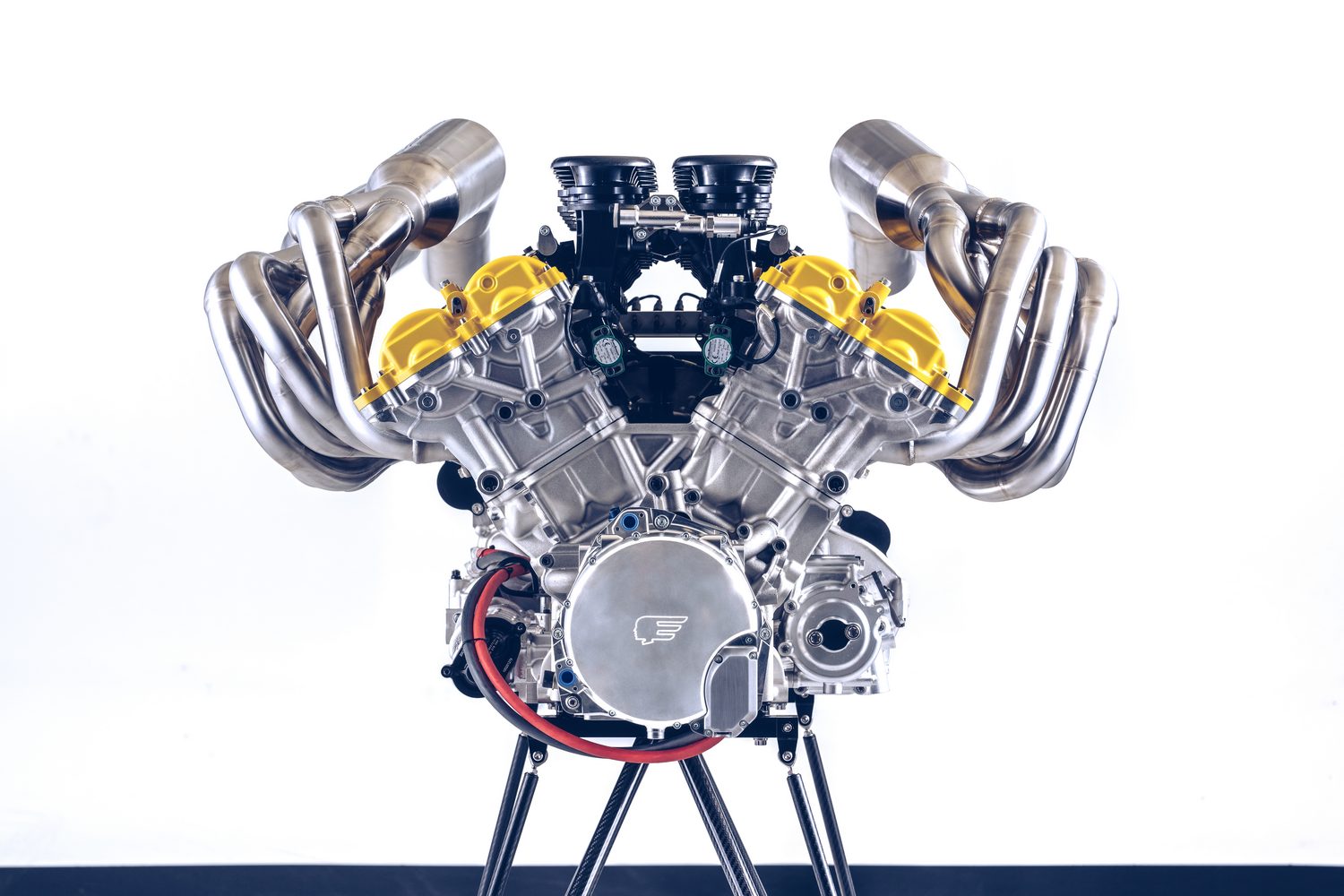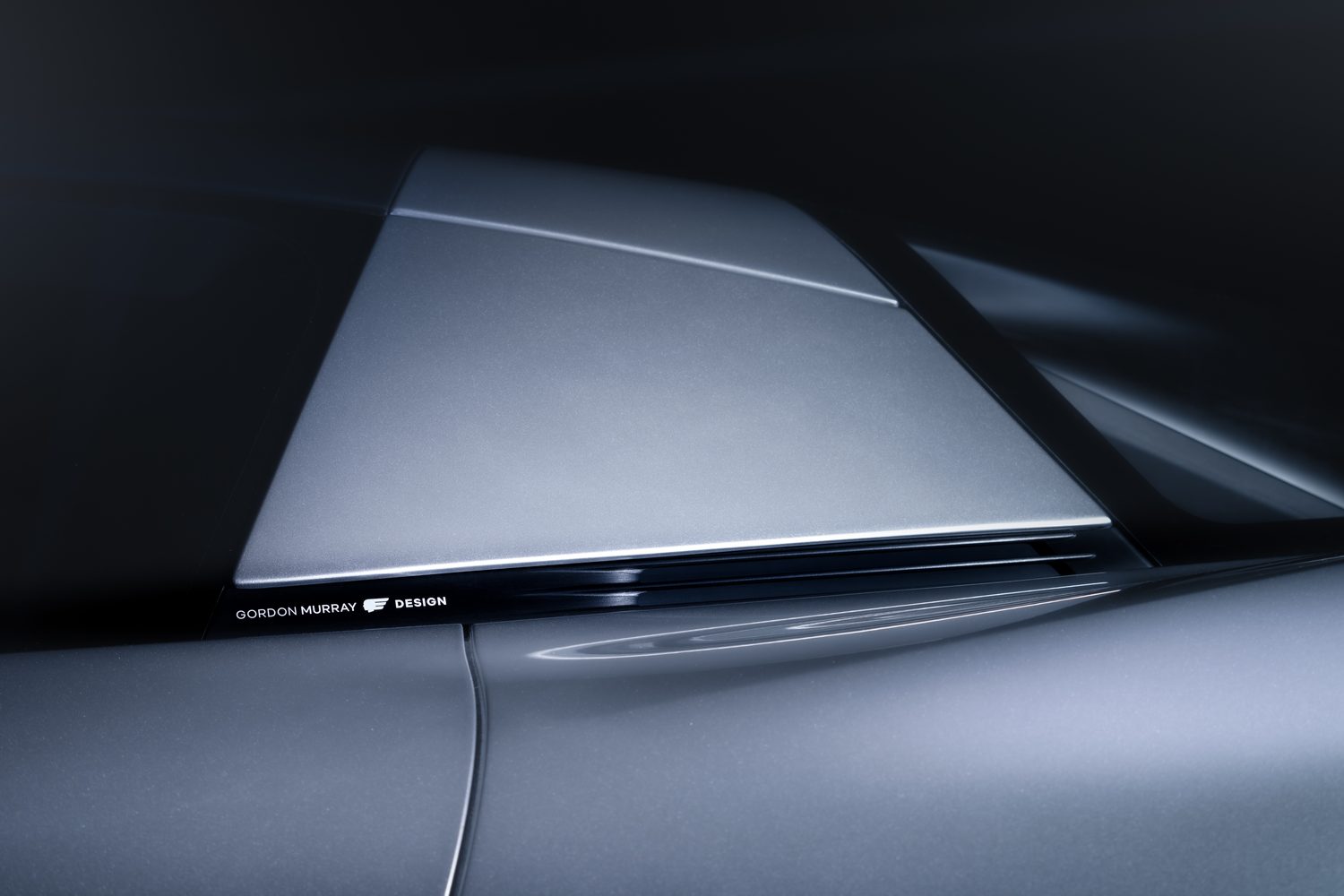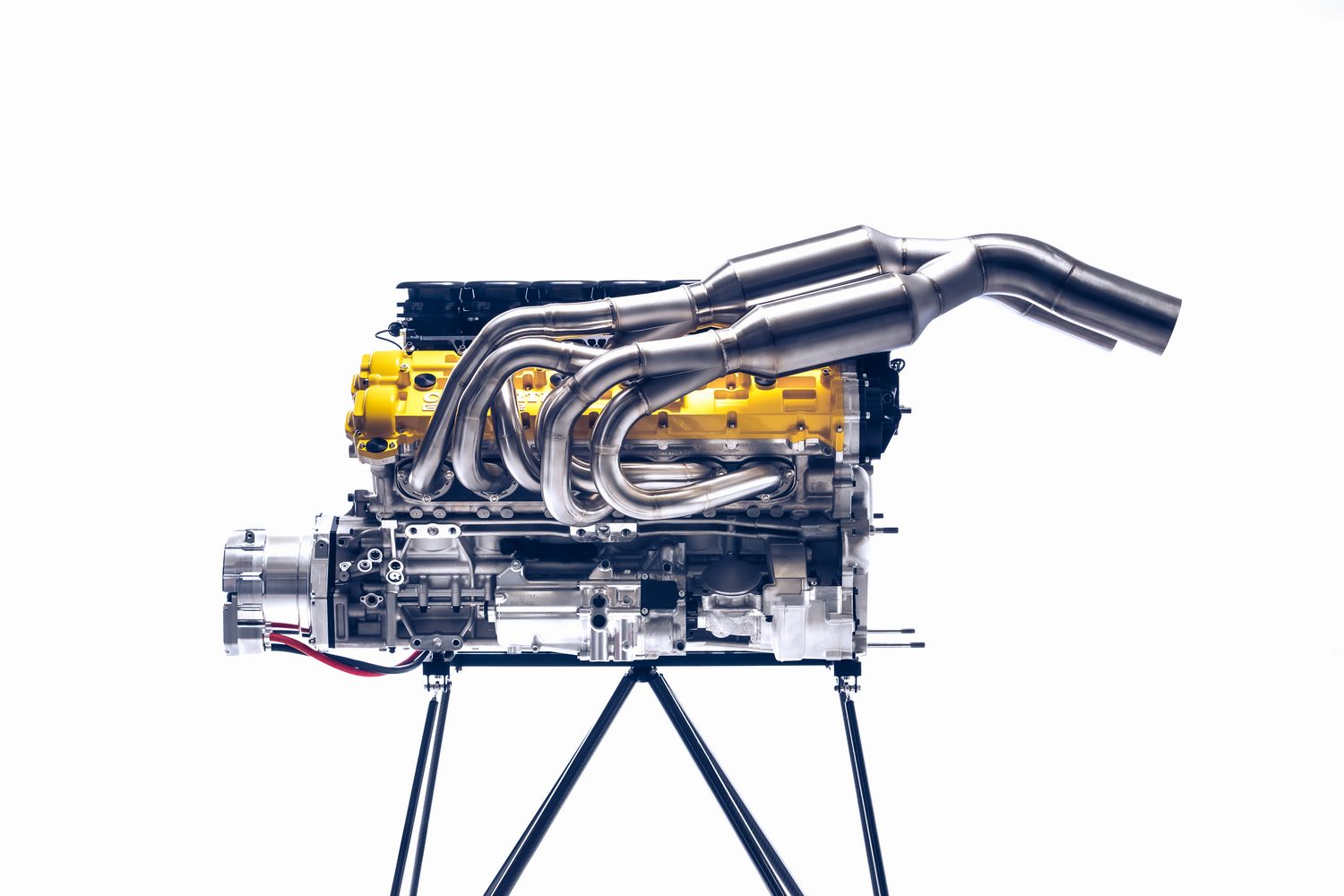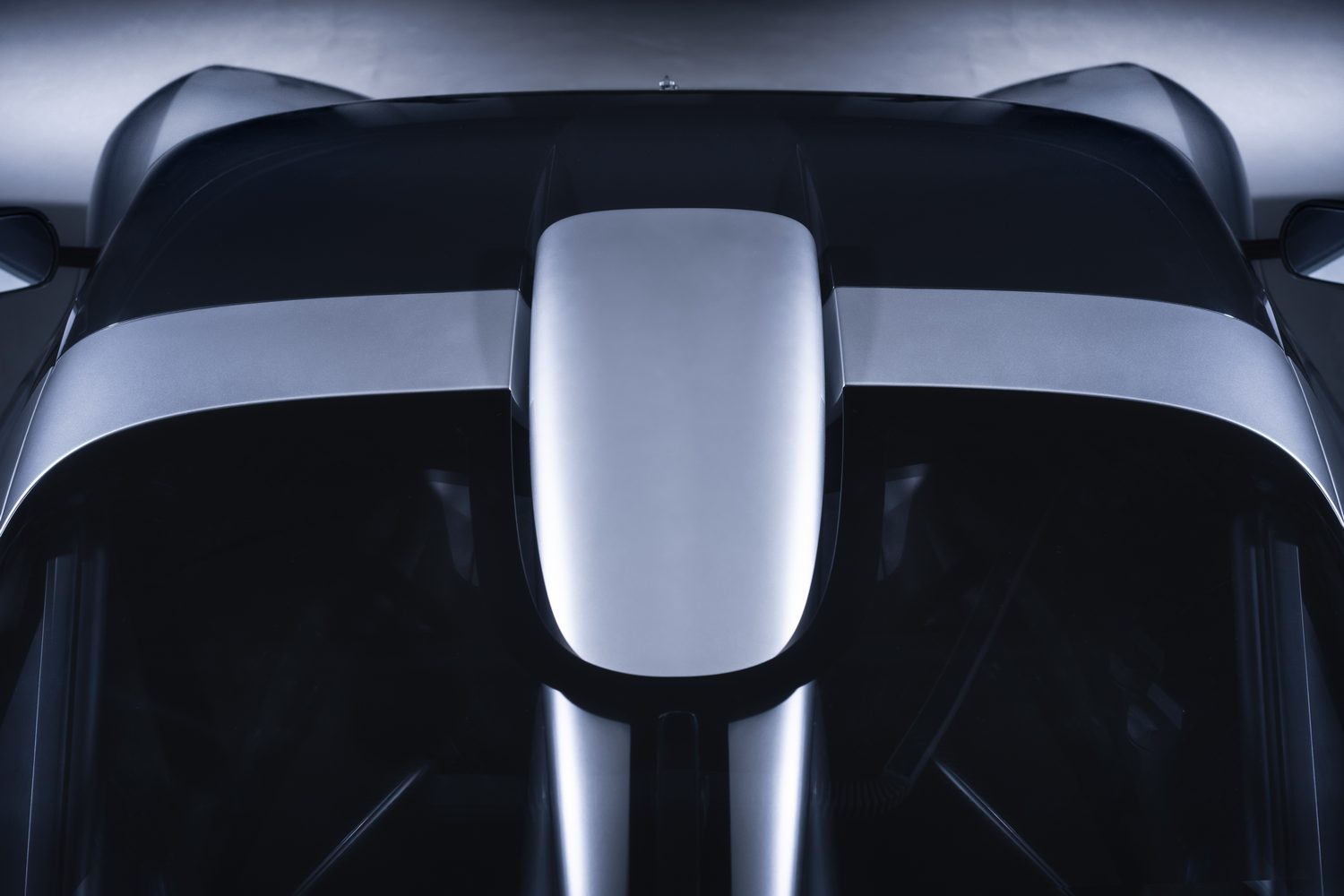Gordon Murray Automotive (GMA) has unveiled its latest supercar, the T.33, following its T.50 hypercar and the track-orientated T.50 Niki Lauda.
Cosworth power
The T.33 is set to be powered by the same mid-mounted 3.9-litre V12 engine as the T.50, which was jointly developed by GMA and engine-builder Cosworth. While it's ostensibly the same engine - "the greatest road-going V12 the world has ever seen" - and retains slightly modified versions of the V12's cylinder heads, much of the rest of the internals has been reworked including the camshafts, exhaust system, cooling systems, variable valve timing and engine mapping.
Despite being a V12, the Cosworth engine is exceptionally light, weighing in at just 178kg. In the T.33 the V12's maximum power output is 615hp at 10,500rpm (the engine revs to a screaming 11,100rpm), which, considering the car's projected 1,100kg weight, should make it very quick indeed.
The power is sent to the rear wheels through a bespoke six-speed manual gearbox or optional paddle-shift unit developed by Xtrac, which is both ultra-fast and ultra-light, adding no more than 80kg to the car's overall weight.
Speaking about the power unit, the company's founder, Gordon Murray, the designer of the legendary 1990s supercar, the McLaren F1, as well as innumerable racing cars, said:
"The engine is the heart and soul of any supercar. And to ensure driving perfection, it must be bespoke, and it must be normally aspirated. We were fortunate that we had the world's greatest V12 from the T.50 as a starting point."
"Yet, nothing was taken for granted," he said, "and no part was automatically carried over without due diligence and consideration. When we once again joined forces with our technical partner Cosworth to create a bespoke engine for the T.33, every single detail was pored over in painstaking depth. Numerous systems and components were re-engineered and re-designed to pursue excellence, and we are 100 per cent confident that the GMA.2 V12 provides the perfect match for the T.33's driving characteristics."
Ground-effect aerodynamics
From the outside, the T.33 is a different beast to the T.50 in that it's pretty for starters. Gone is the large fan that adorned the rear of the T.50, replaced instead by aerodynamics that channel air under the floor of the car to create ground-effect, sucking the car onto the road, removing the need for the large wings, spoilers and vents found on most other supercars to create downforce.
On the subject of the T.33's looks, Murray said:
"The beauty of simplicity is the key to the design of every GMA model, and the new T.33 is no exception. As with the T.50 and T.50s, each component and every curve and radius is a bespoke design on the T.33 and is there because it has a function to perform. Our slavish adherence to the concept of engineering art extends far beneath the surface of the T.33's body. Every part, no matter how small and no matter that the owner may never see it, is designed to the same exacting standards as the body."
Practicality?
Inside too, the T.33 is different to the T.50 with two conventional side-by-side seats rather than the central driving position found in both the T.50 and McLaren F1. It's quite a low-key affair - driver-focused - with little in the way of large touchscreens or distracting infotainment systems. There are no indicator stalks either, with the lights being operated by thumb buttons on the steering wheel. The rest of the cabin is unashamedly rotary and analogue with surfaces and controls machined from aluminium alloy. It's not totally spartan or impractical, however; not only is the T.33 compatible with Android Auto/Apple CarPlay, but there's also luggage space for six small cases.
Driving experience
Another thing keeping the T.33 light as well as the simple cabin is the carbon-fibre monocoque construction that also provides, GMA says, a great deal of strength and occupant safety, as does the Formula One-inspired safety cell.
Because of its lightness, it doesn't need the same massive, hefty wheels and tyres found on other supercars, getting a set of 19-inch alloys up front and 20-inch rims at the rear, shod in Michelin Pilot Sport 4 S tyres. Carbon-ceramic brake discs from Brembo combined with six-pot brake calipers (four-cylinder at the rear) provide the stopping power, while the suspension employs lightweight double wishbones front and rear working with coil springs over aluminium alloy dampers.
Speaking about actually getting behind the wheel of the T.33, Gordon Murray said:
"Like its T.50 predecessor, the T.33 is all about the driving experience. We have engineered the T.33 to provide exceptional levels of highly tactile and deeply immersive involvement to elevate the driver to a higher plane behind the wheel. Of course, safety is equally paramount, as is everyday usability in all weather conditions. Our judiciously calibrated, non-invasive traction and stability systems are designed not to detract from the driving experience but are there to provide an additional level of confidence when called upon."
The T.33 will be GMA's first car to be homologated for worldwide sale and use, and just 100 examples are set to be built each costing, the company says £1.37 million (€1.65 million before taxes) and above. Deliveries are due to begin in 2024.

